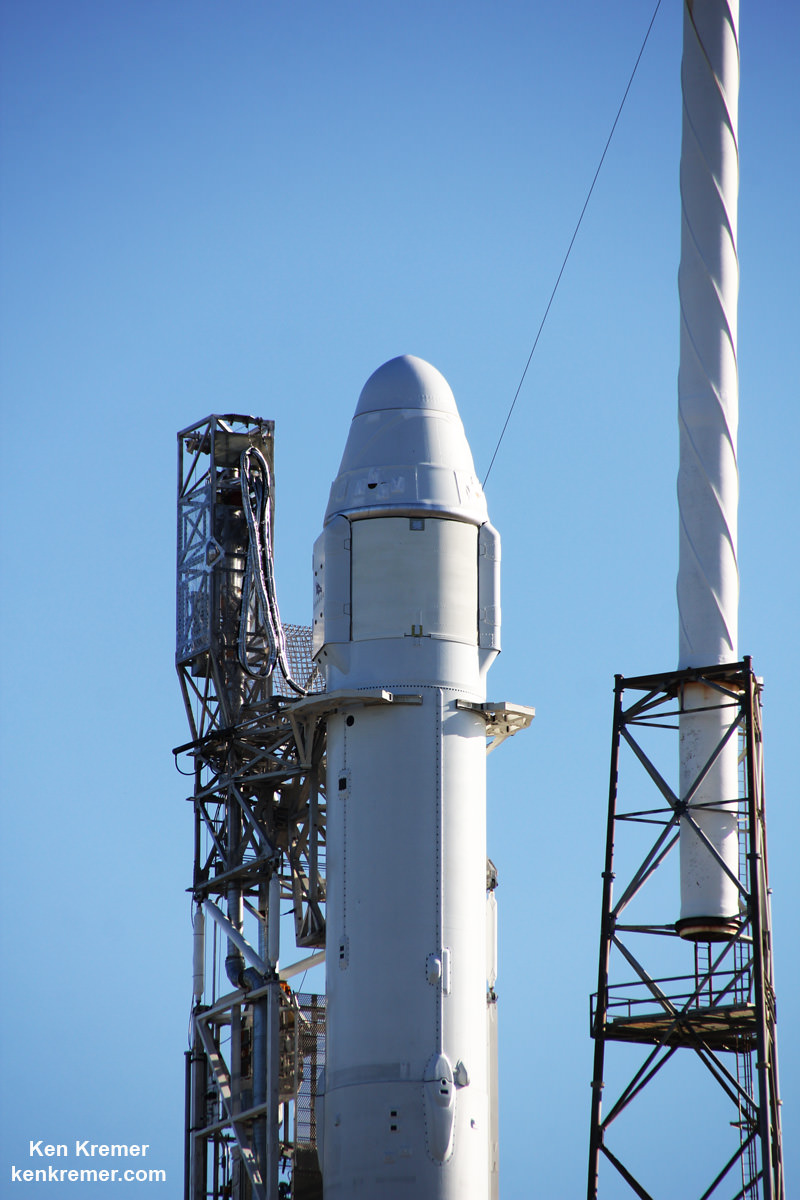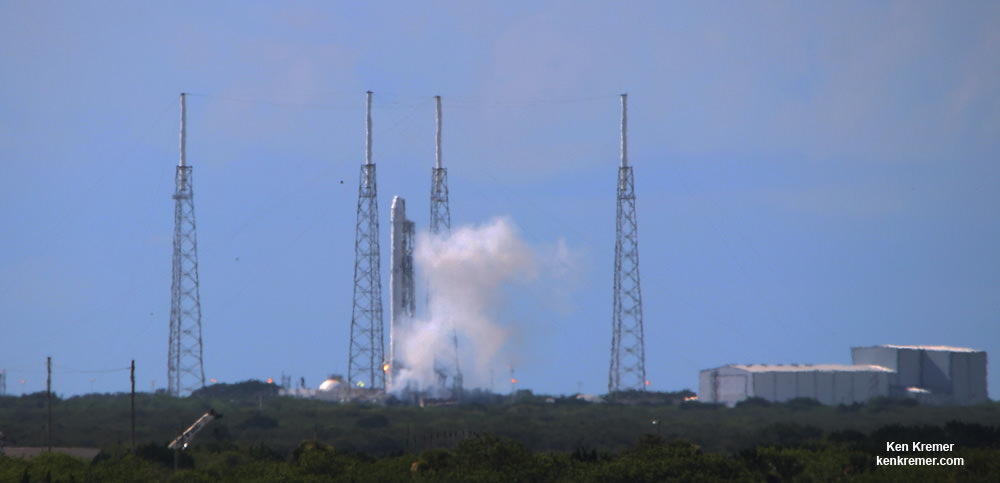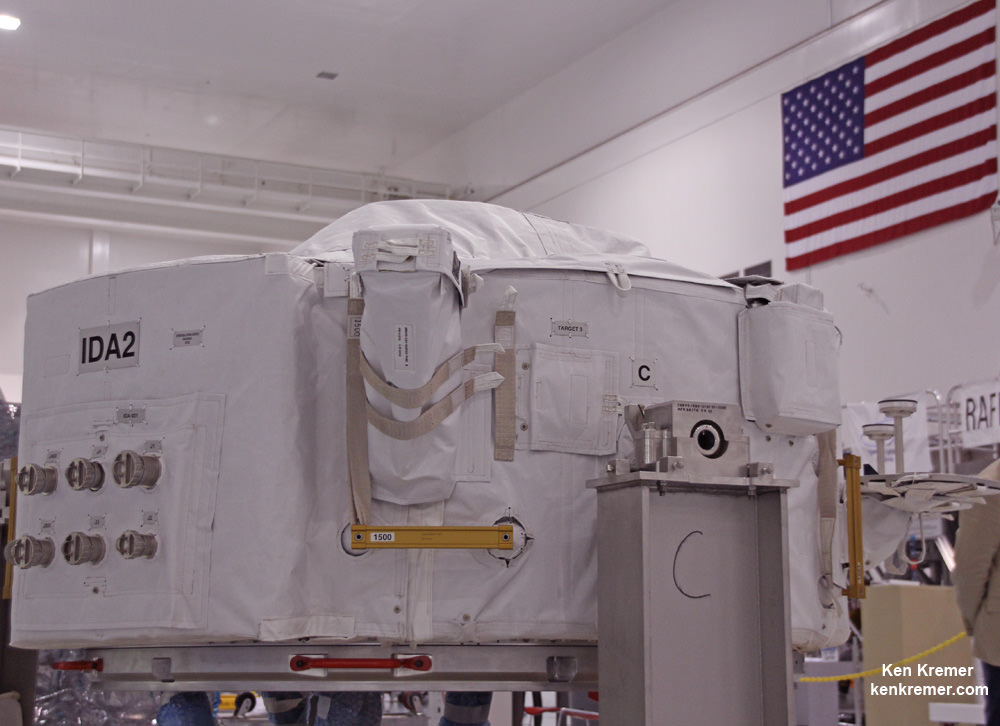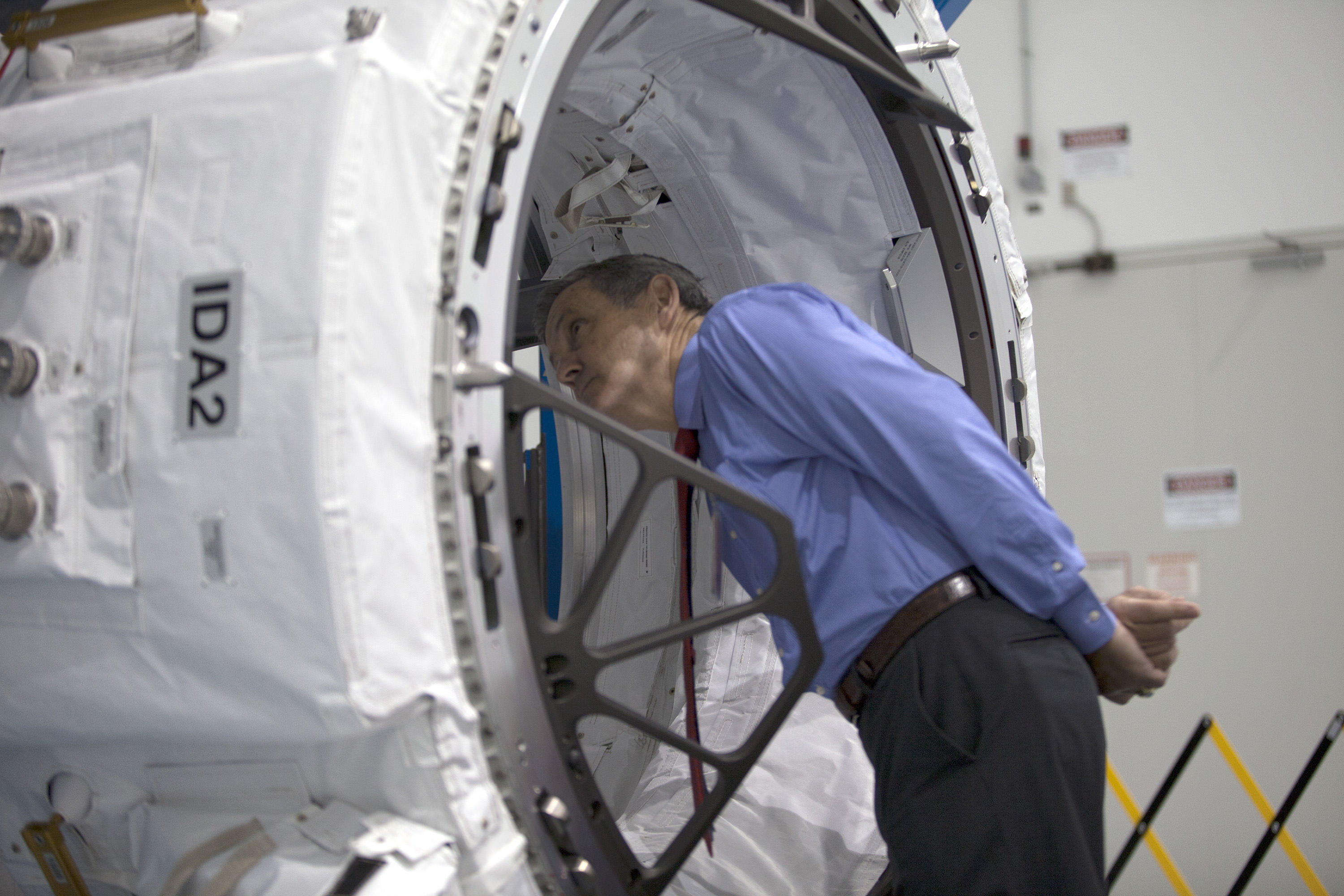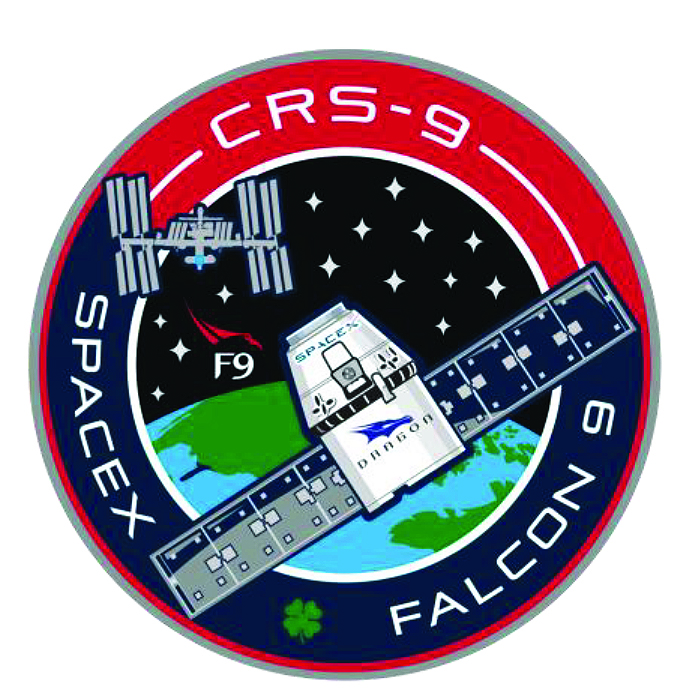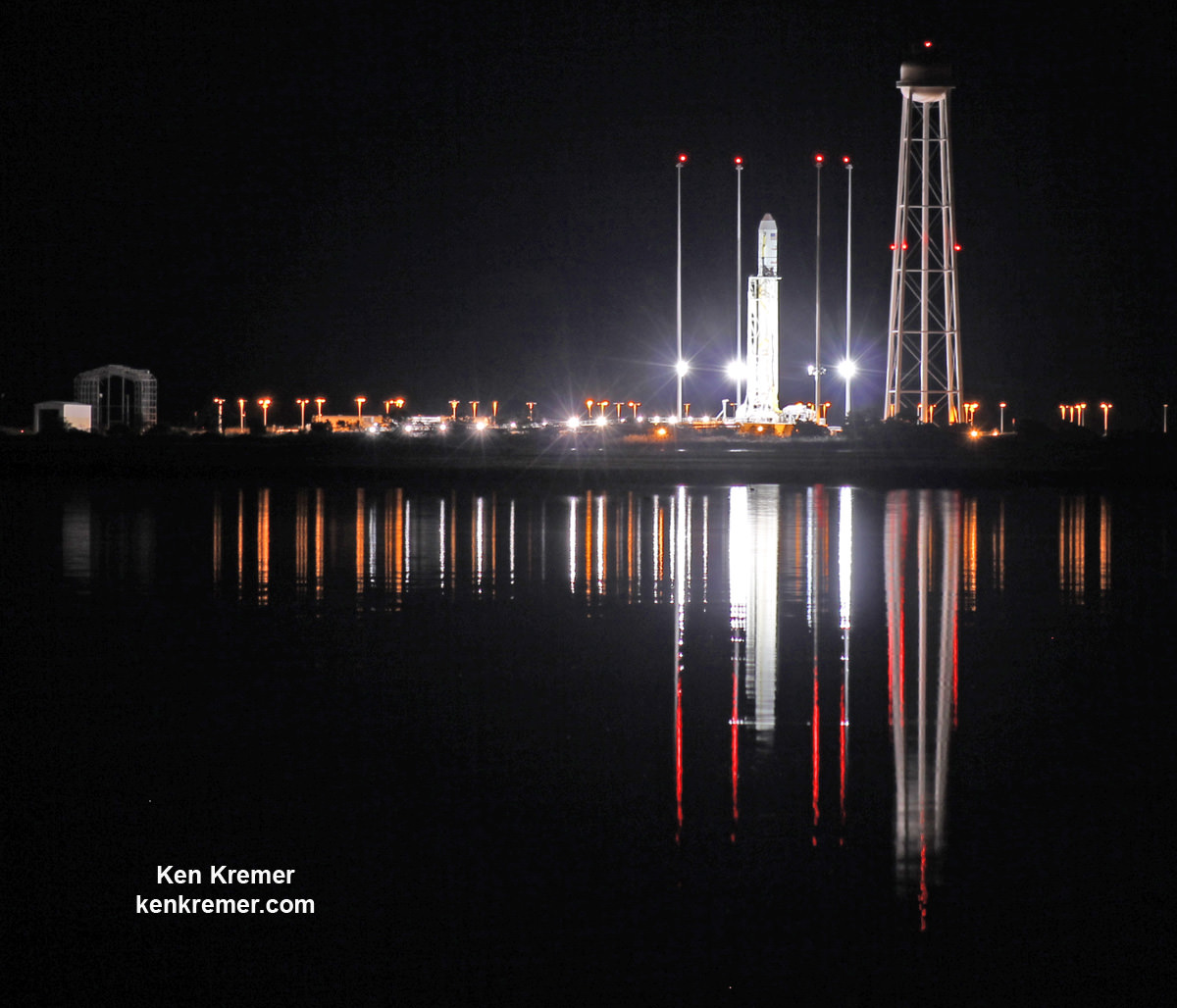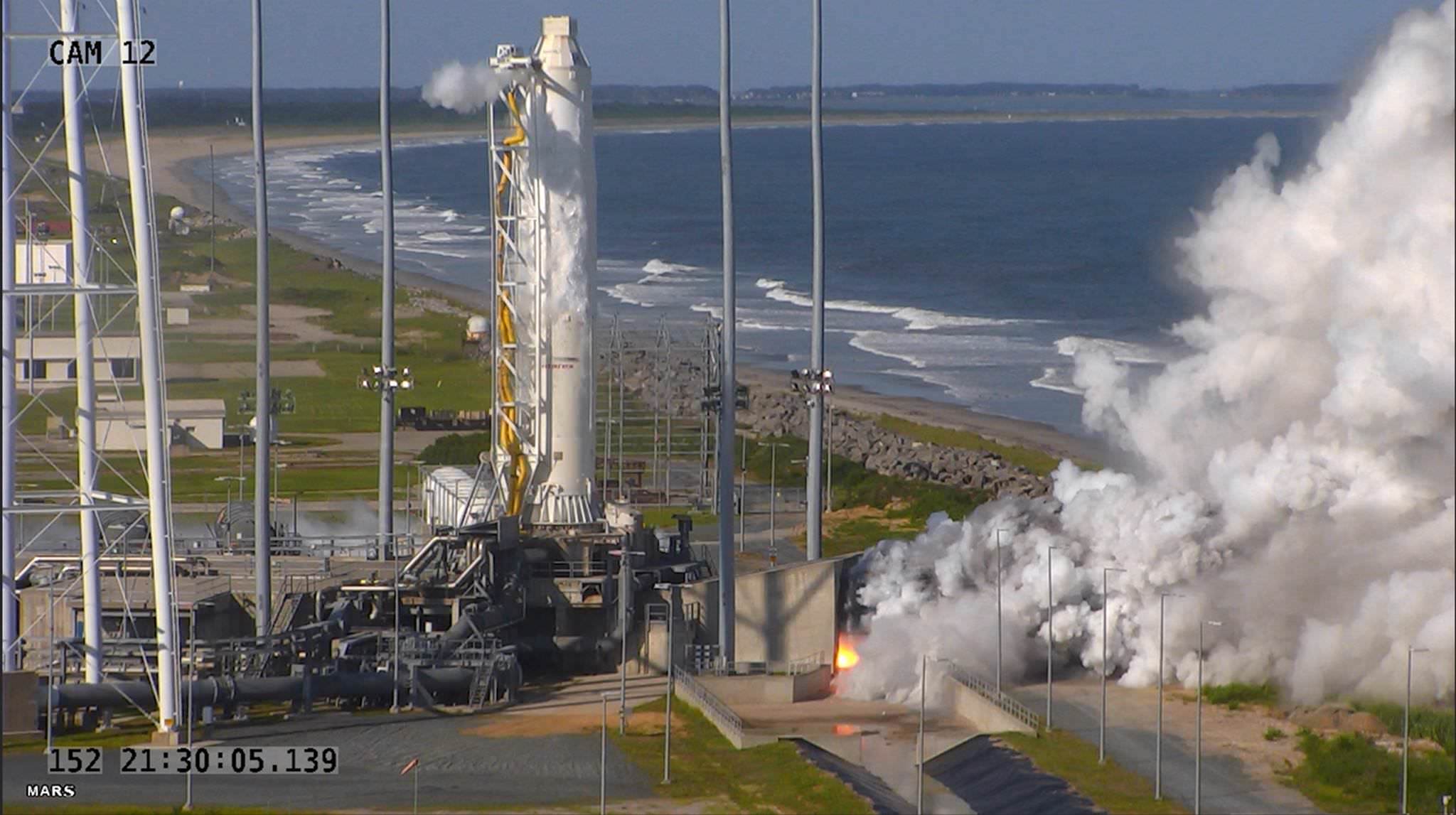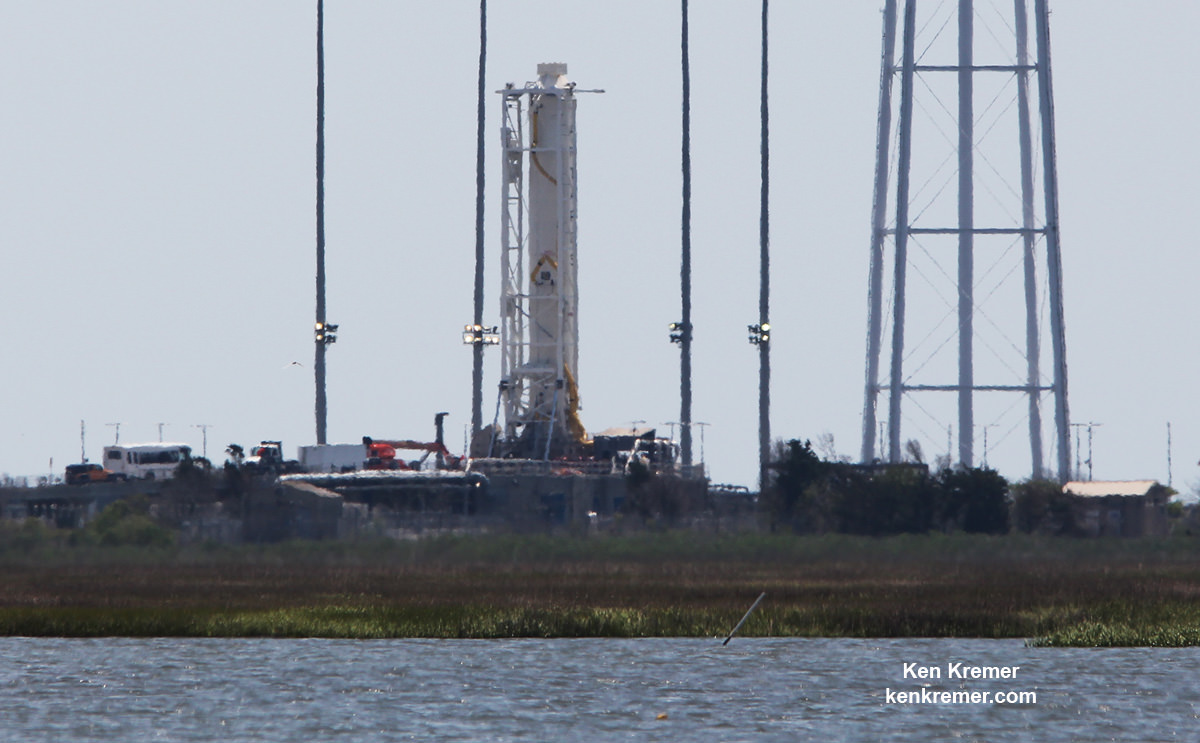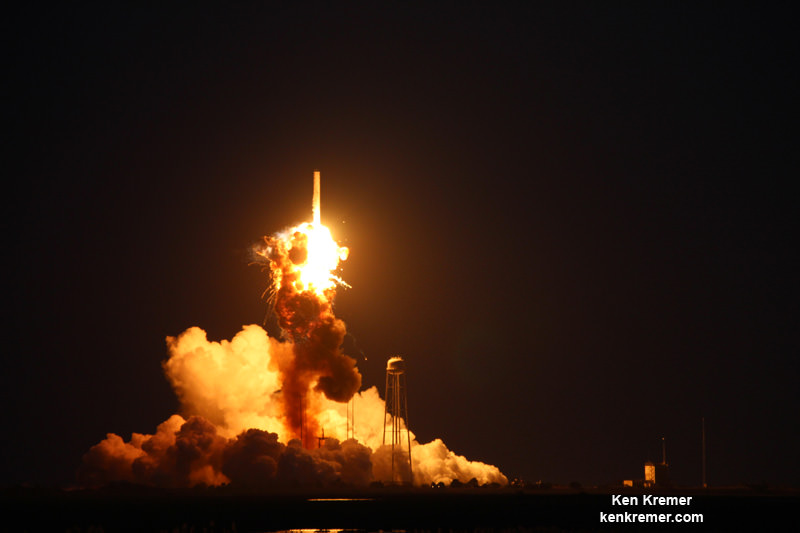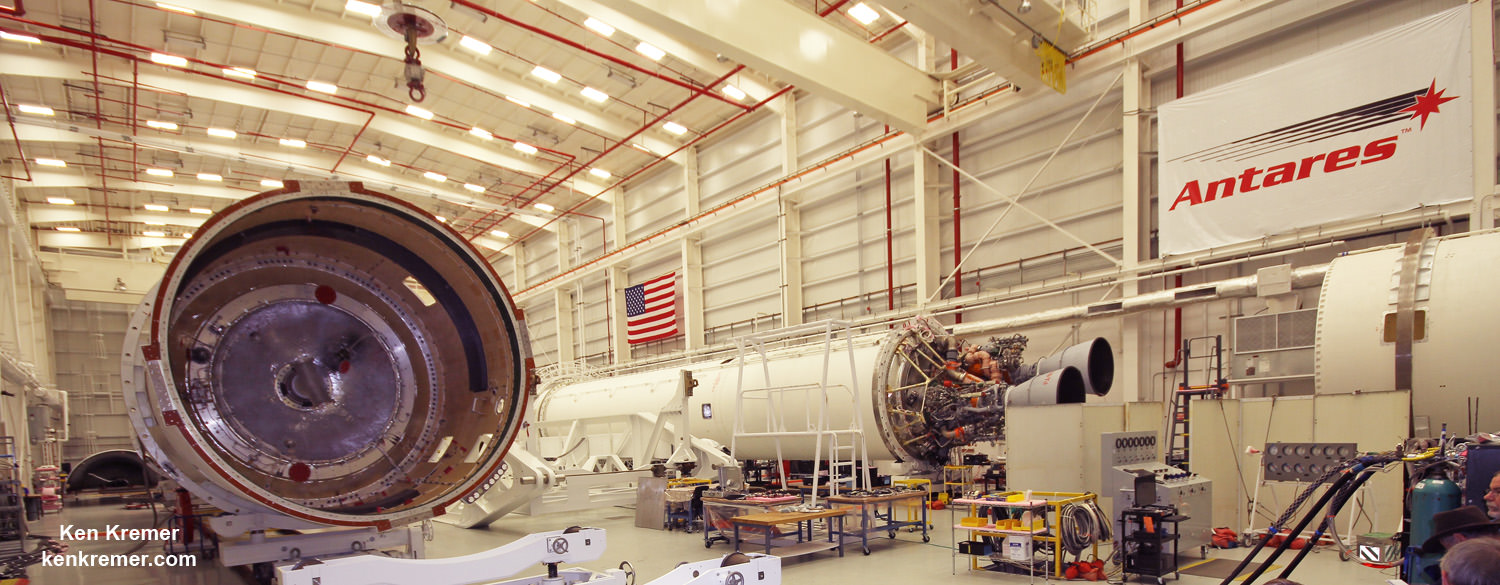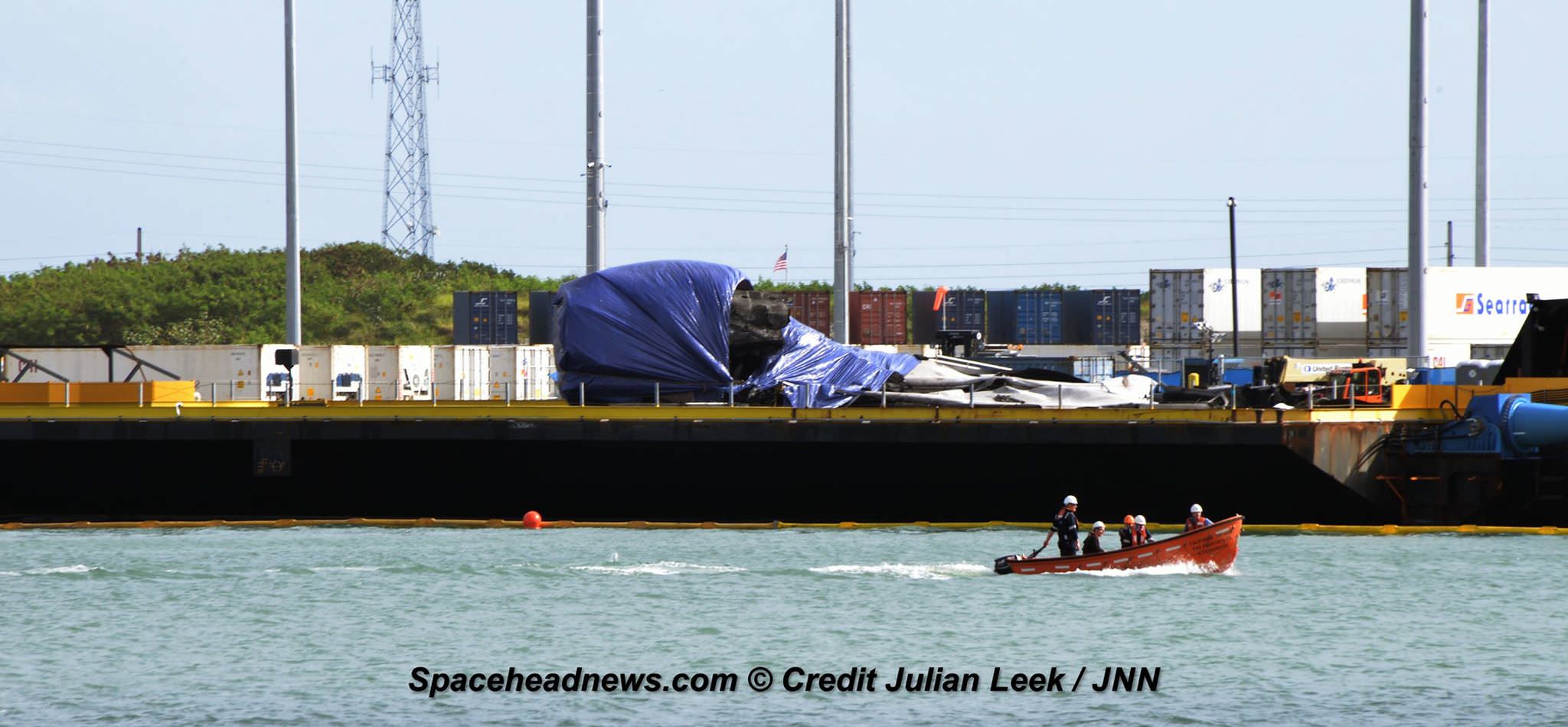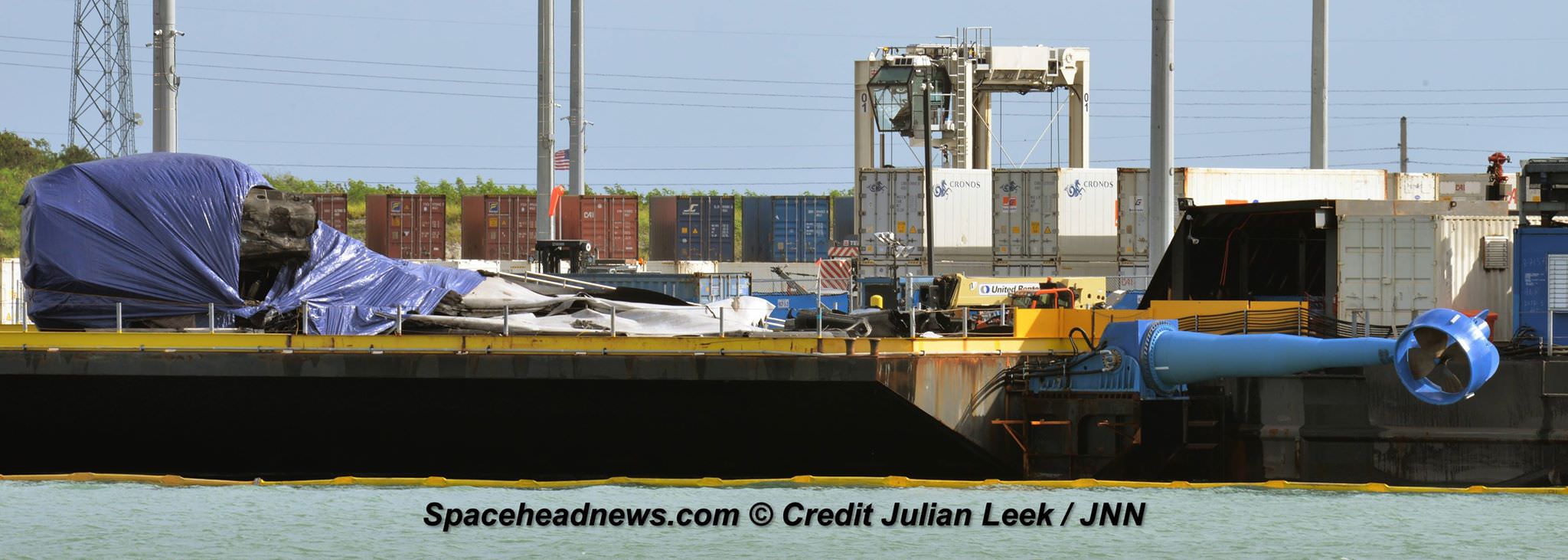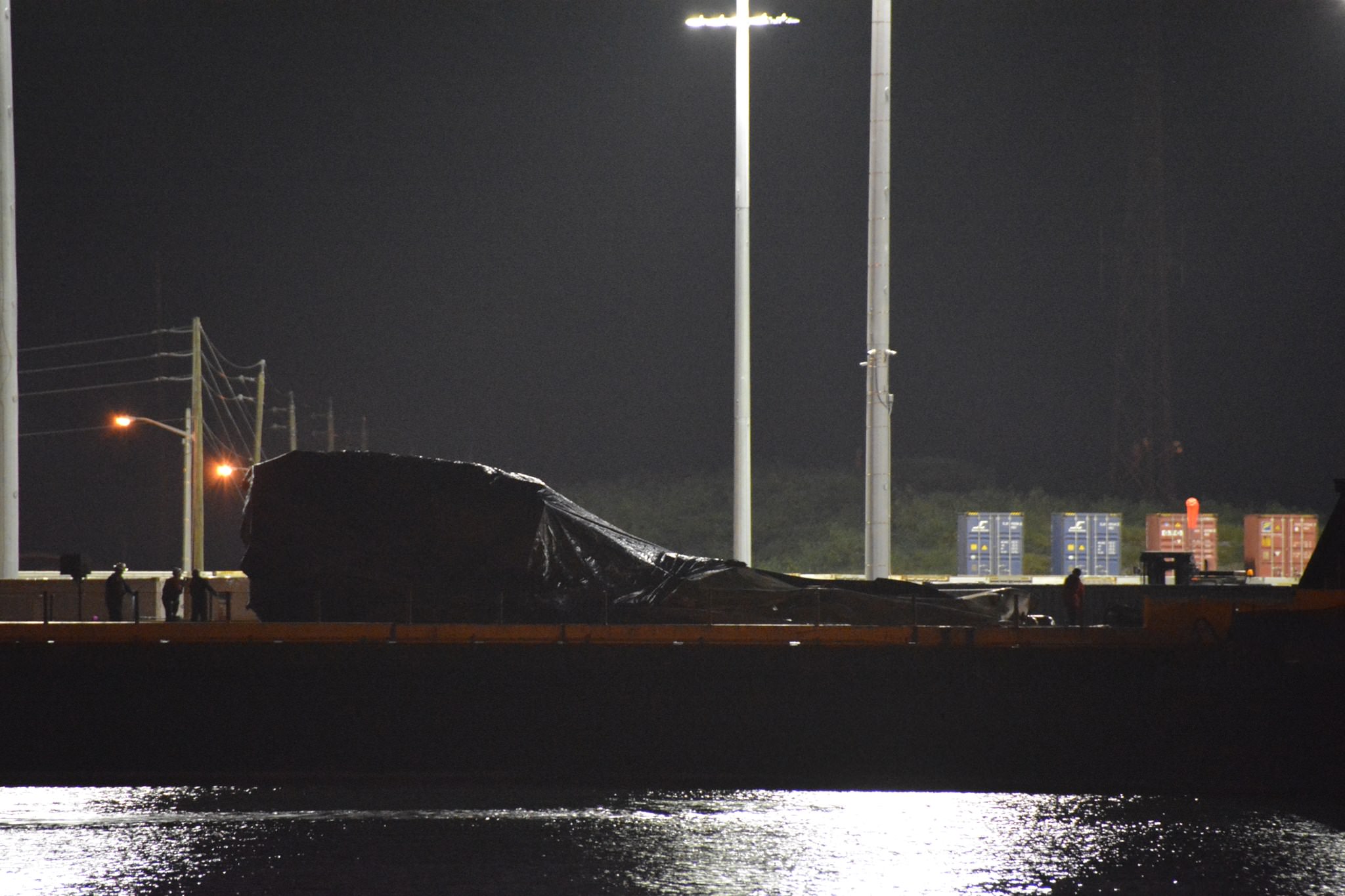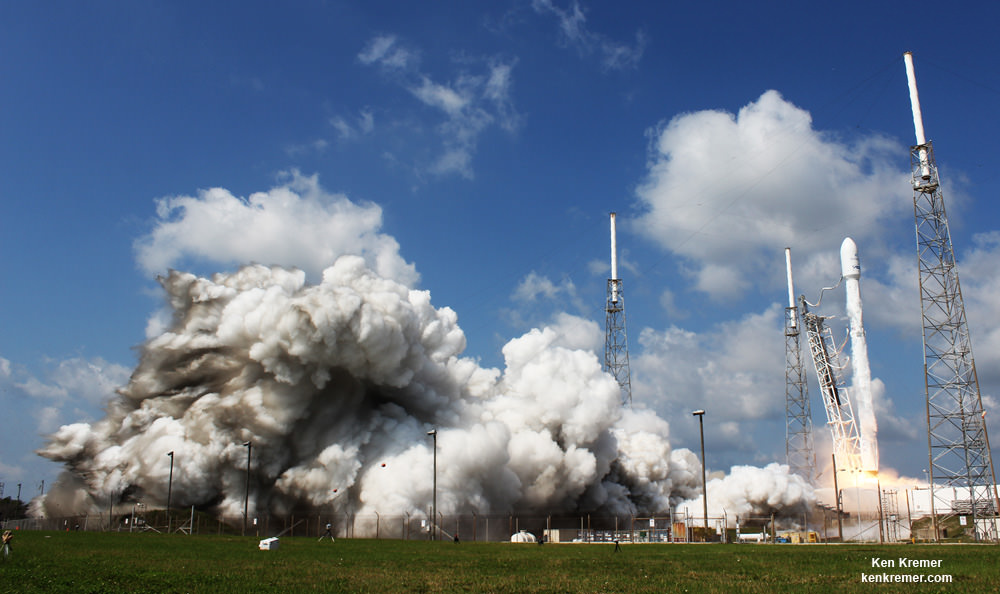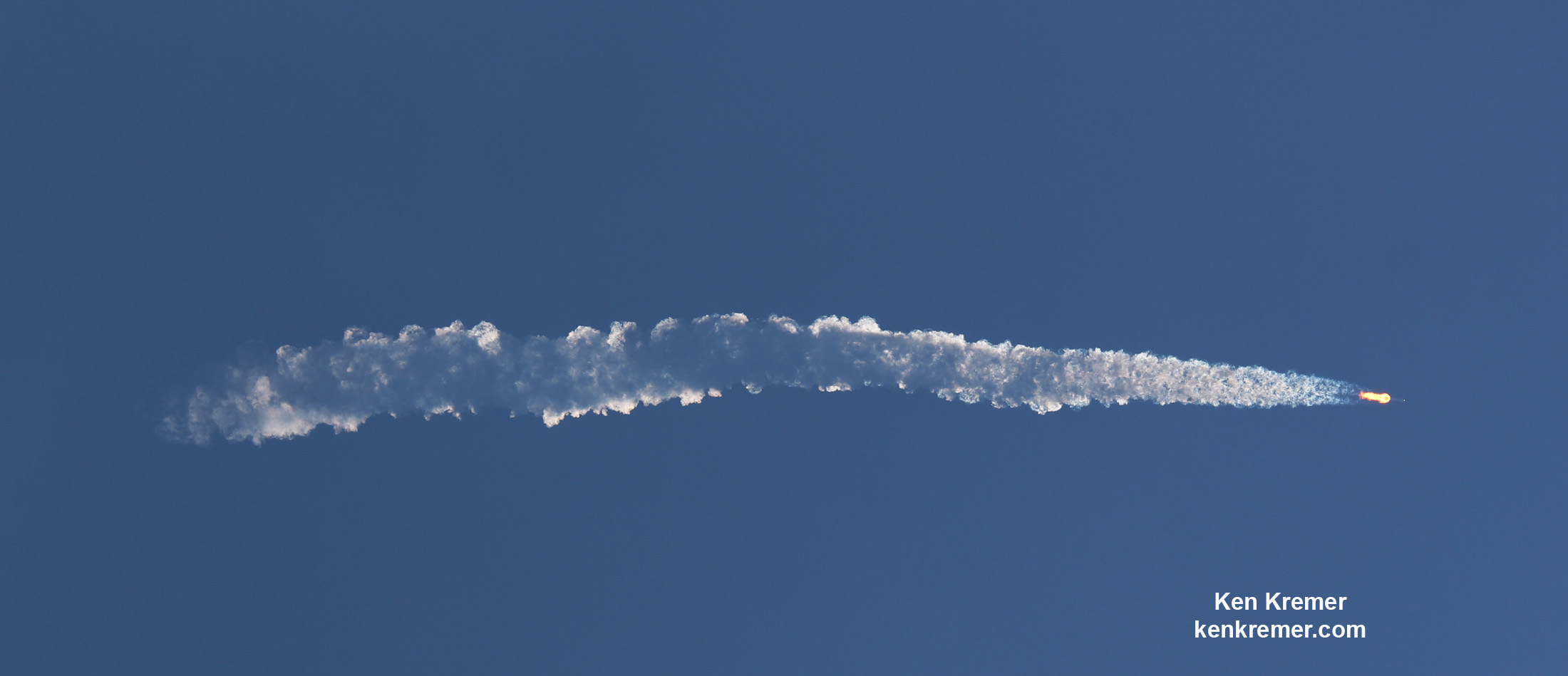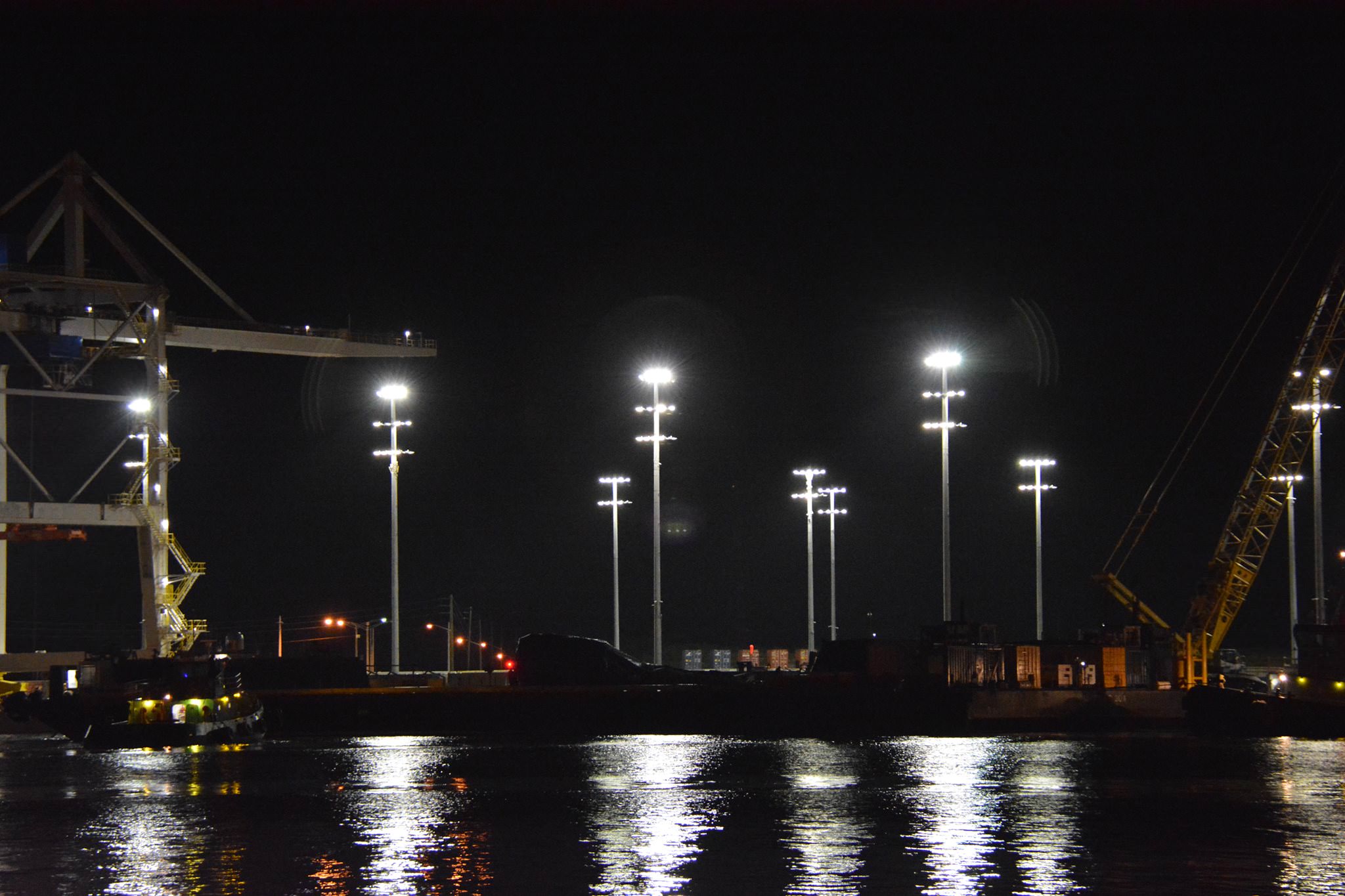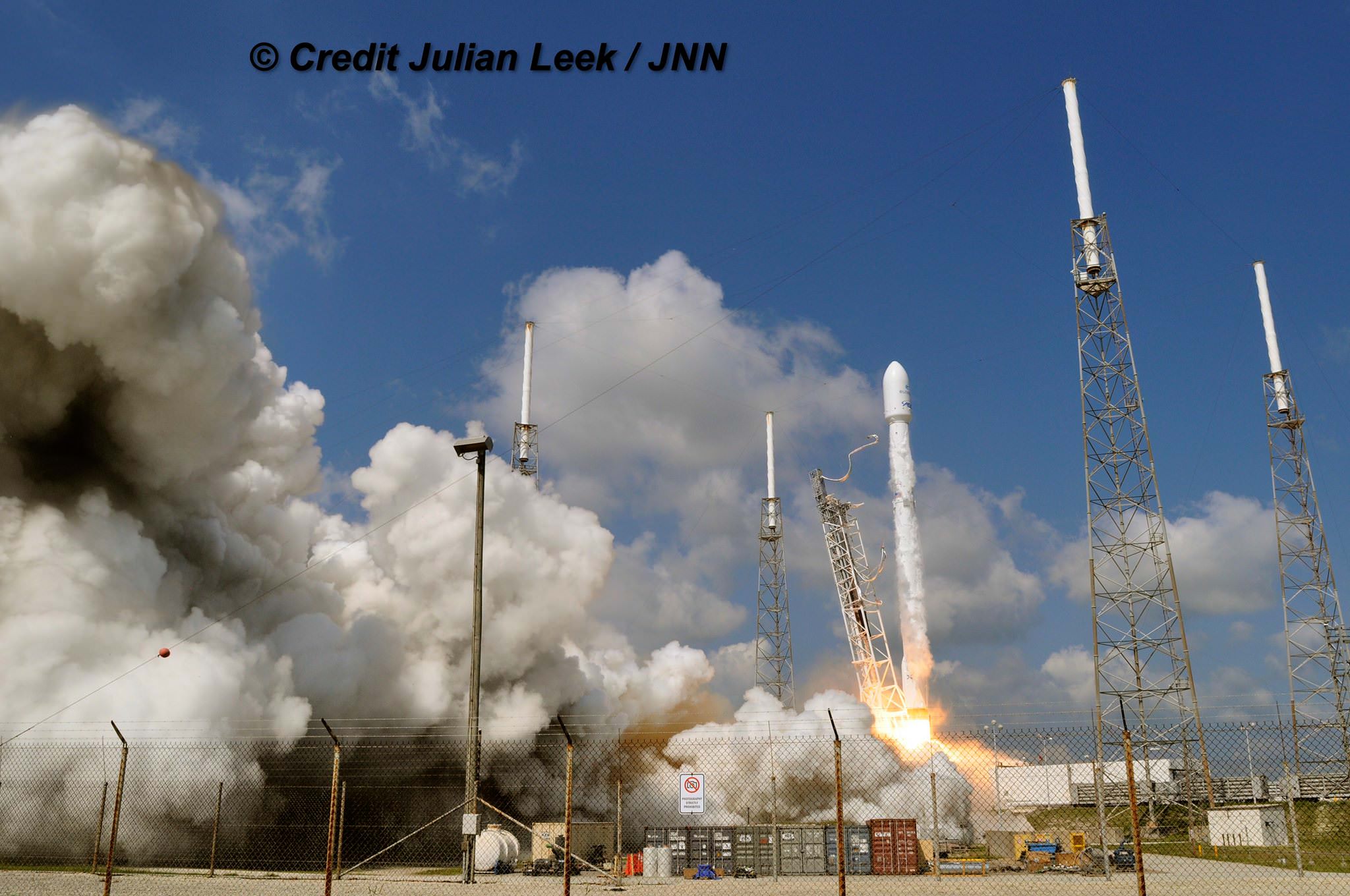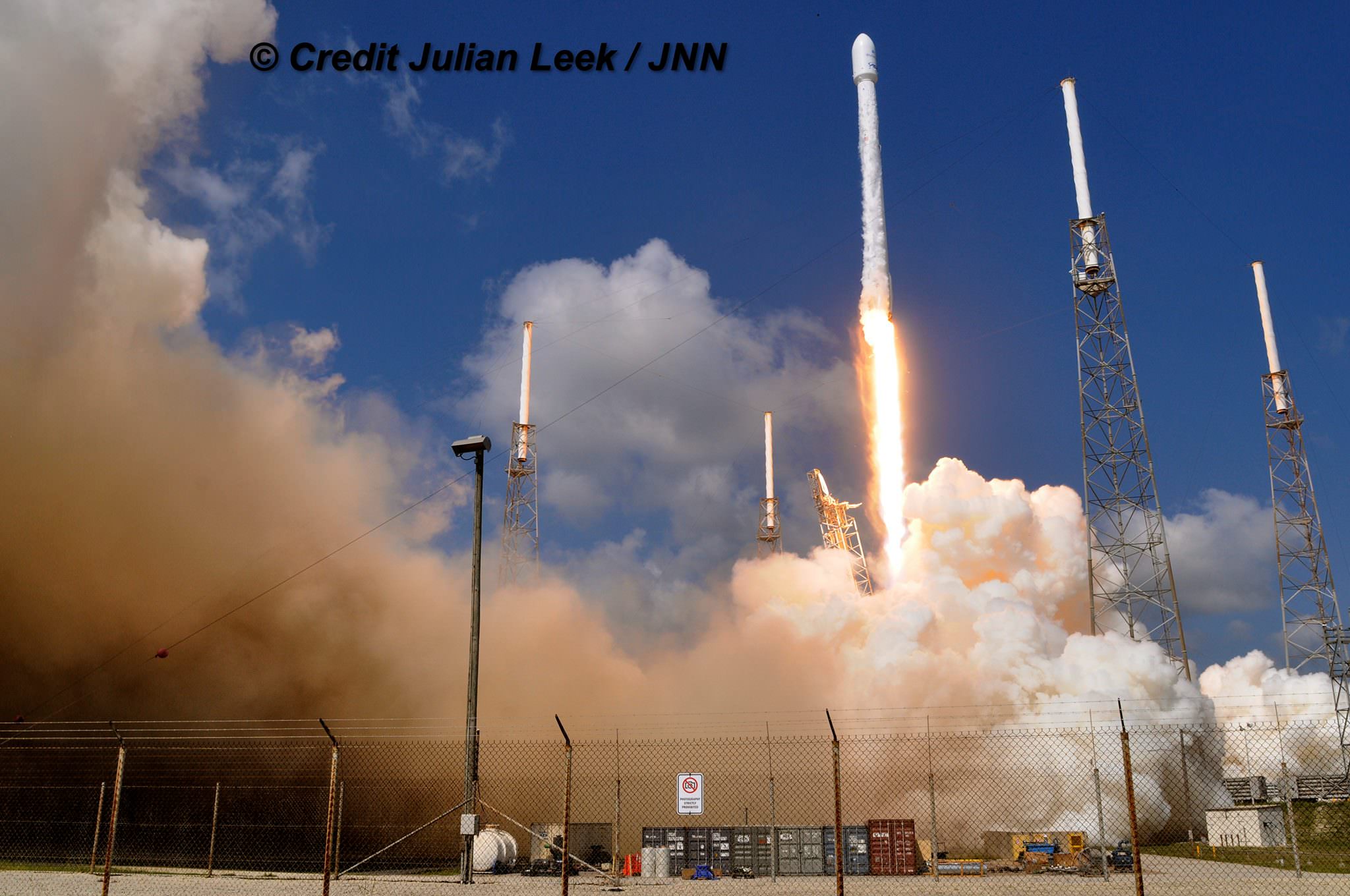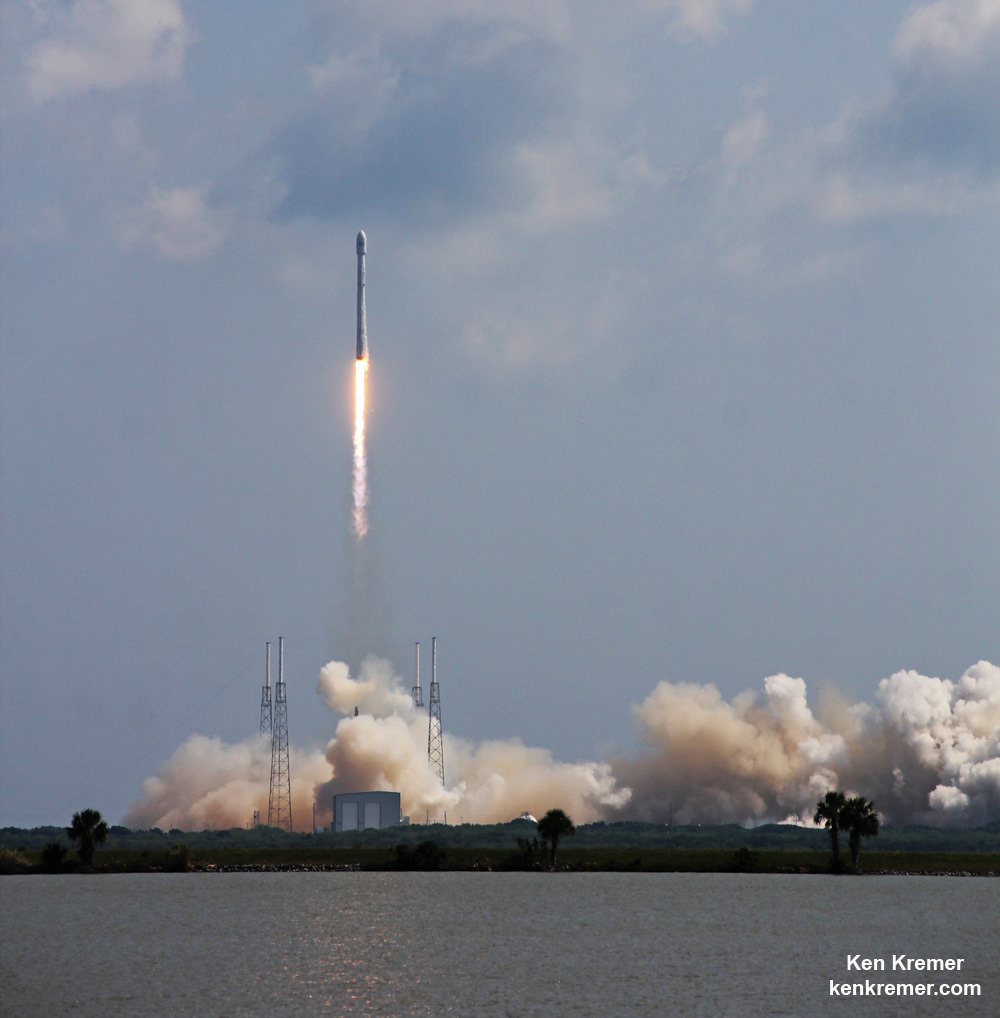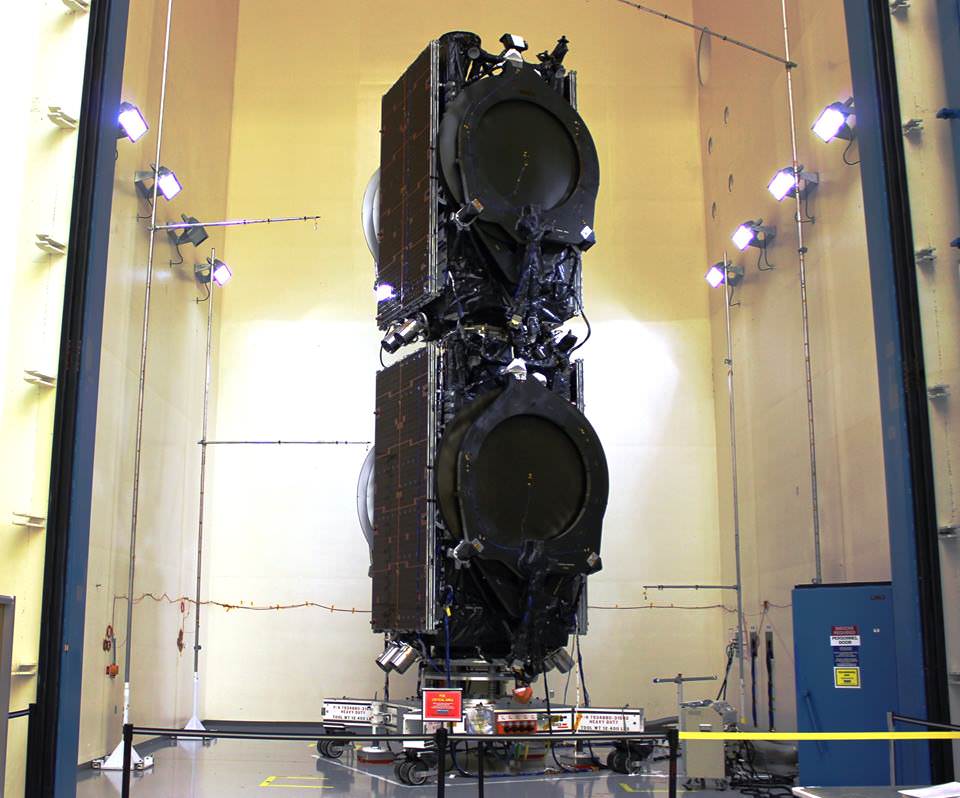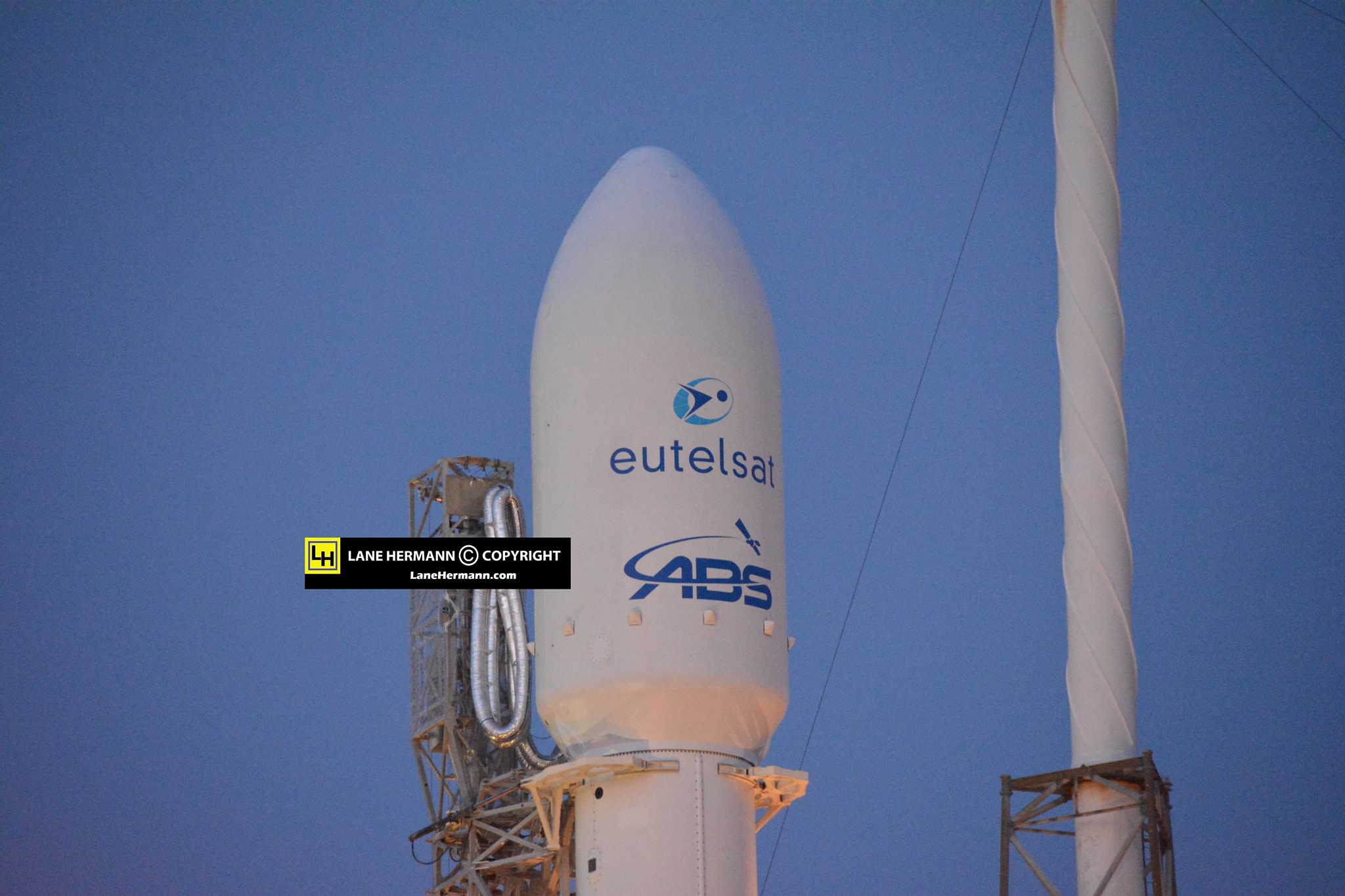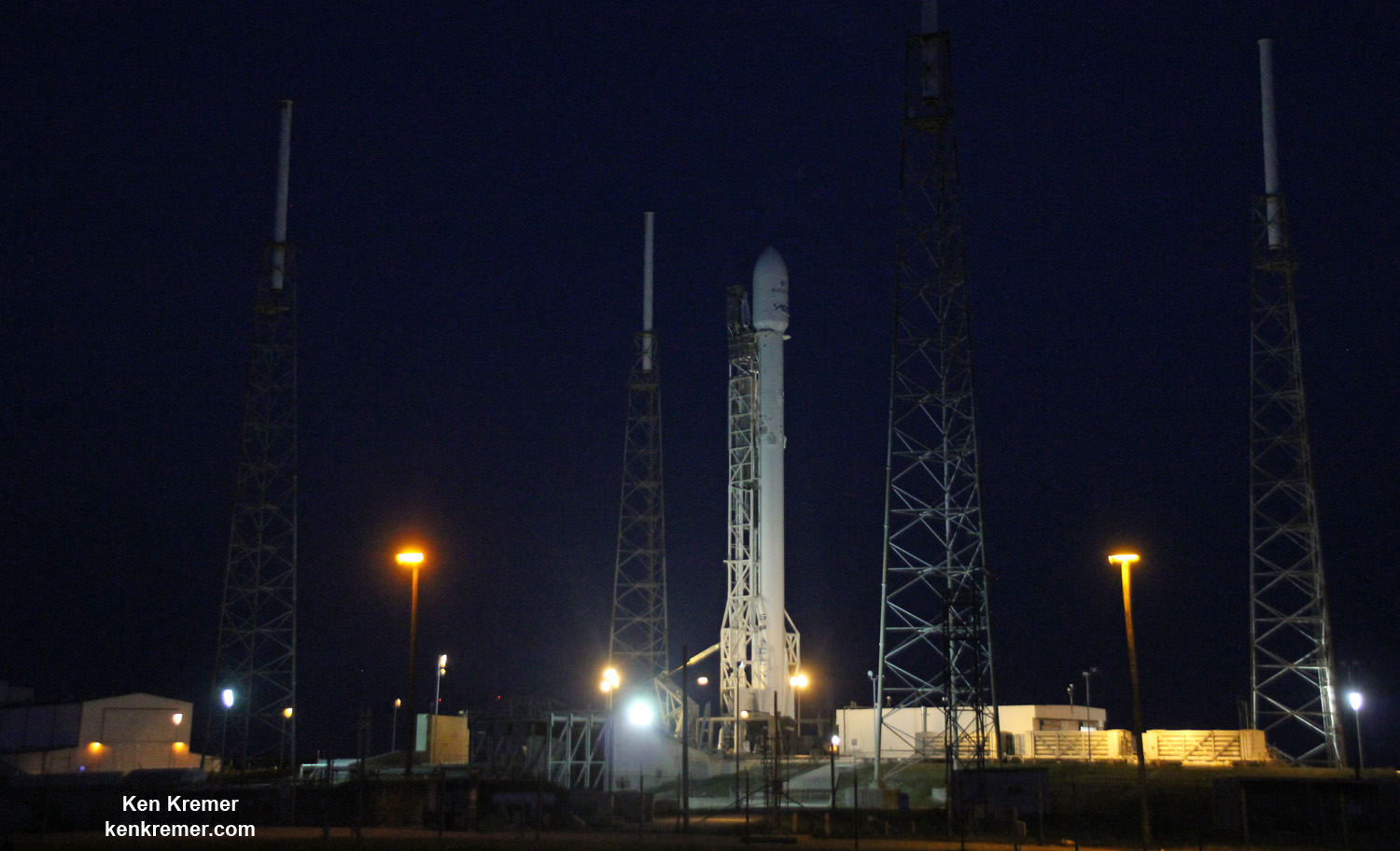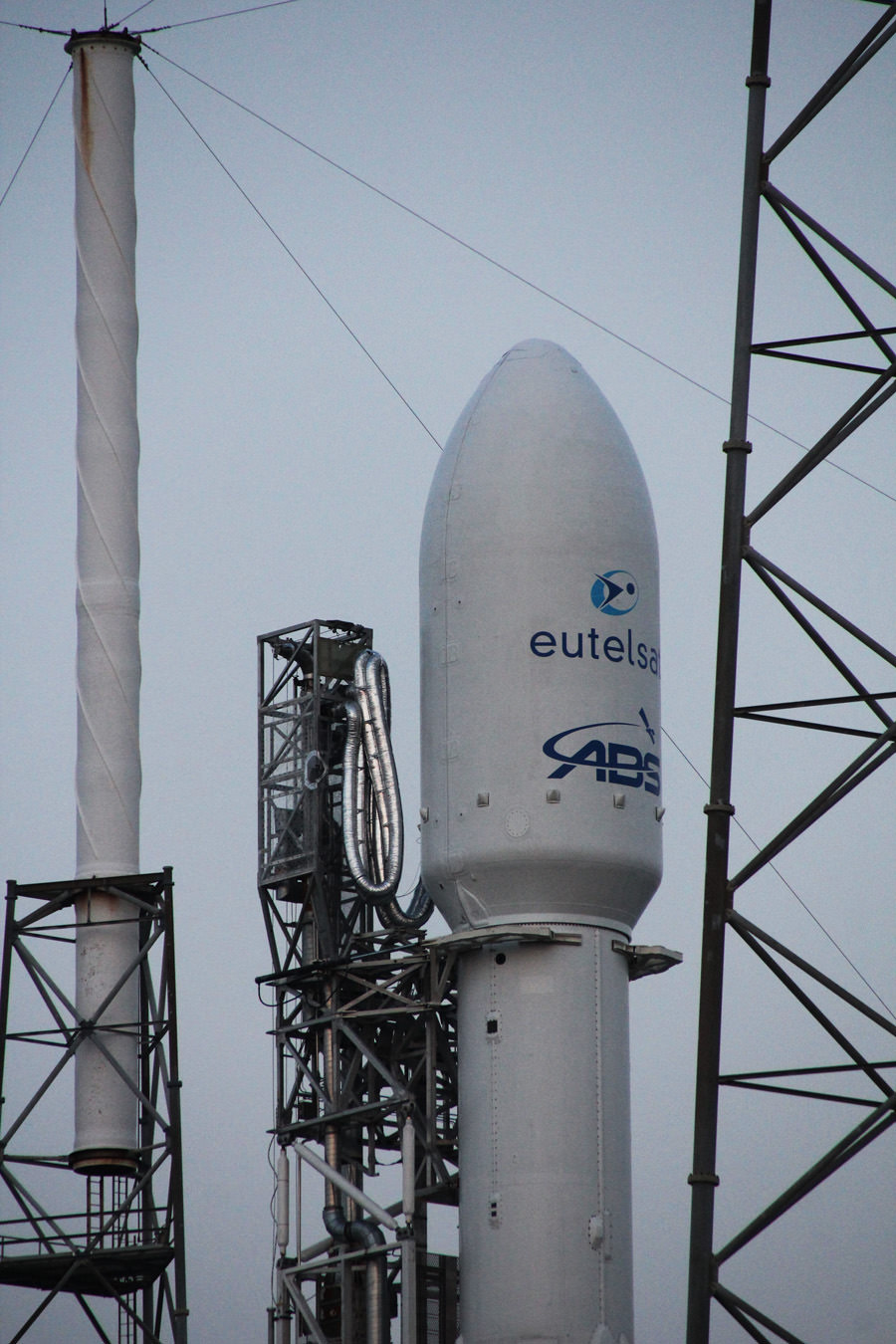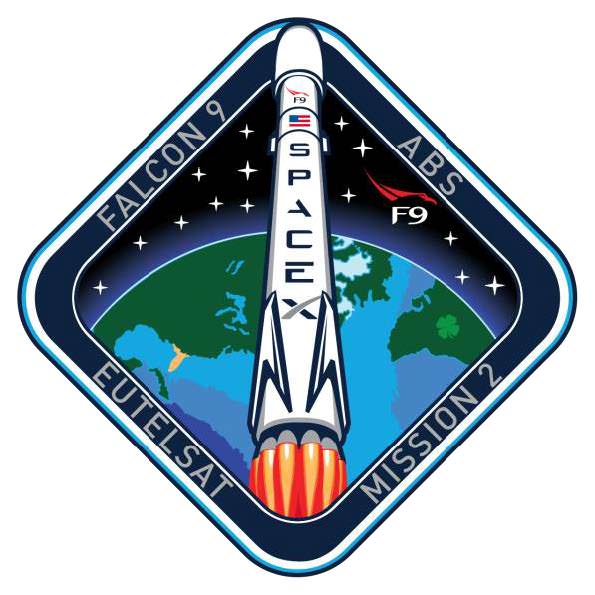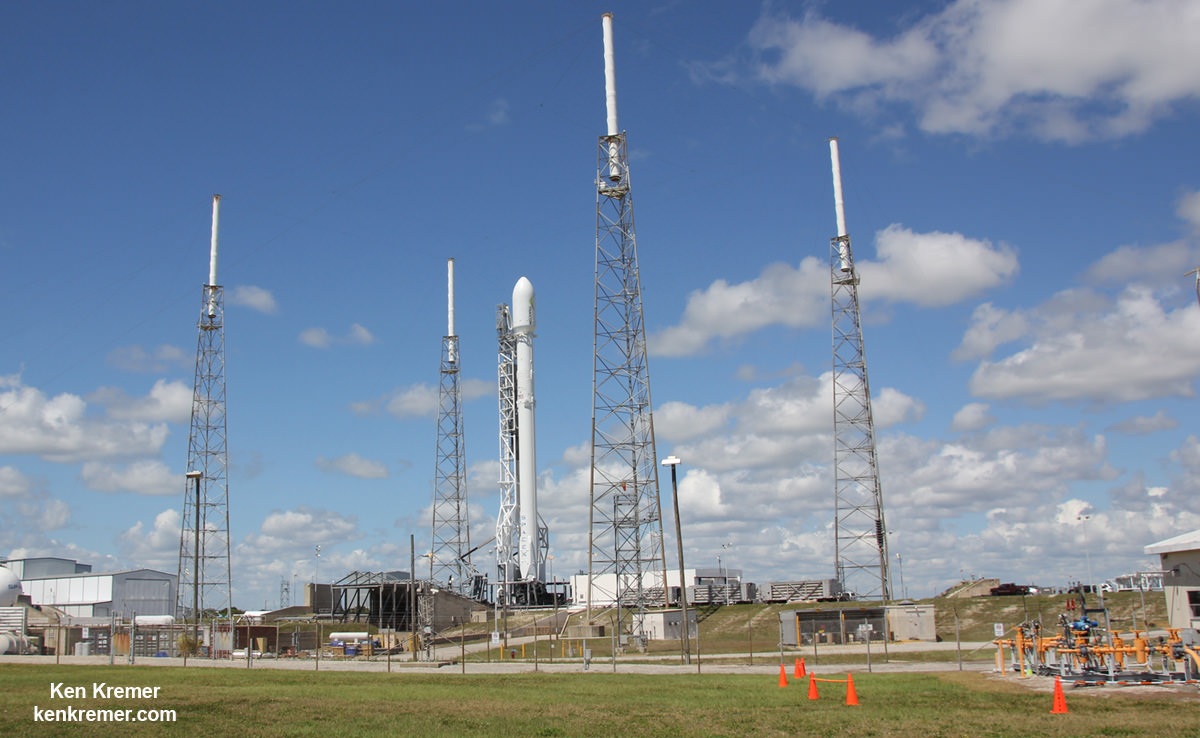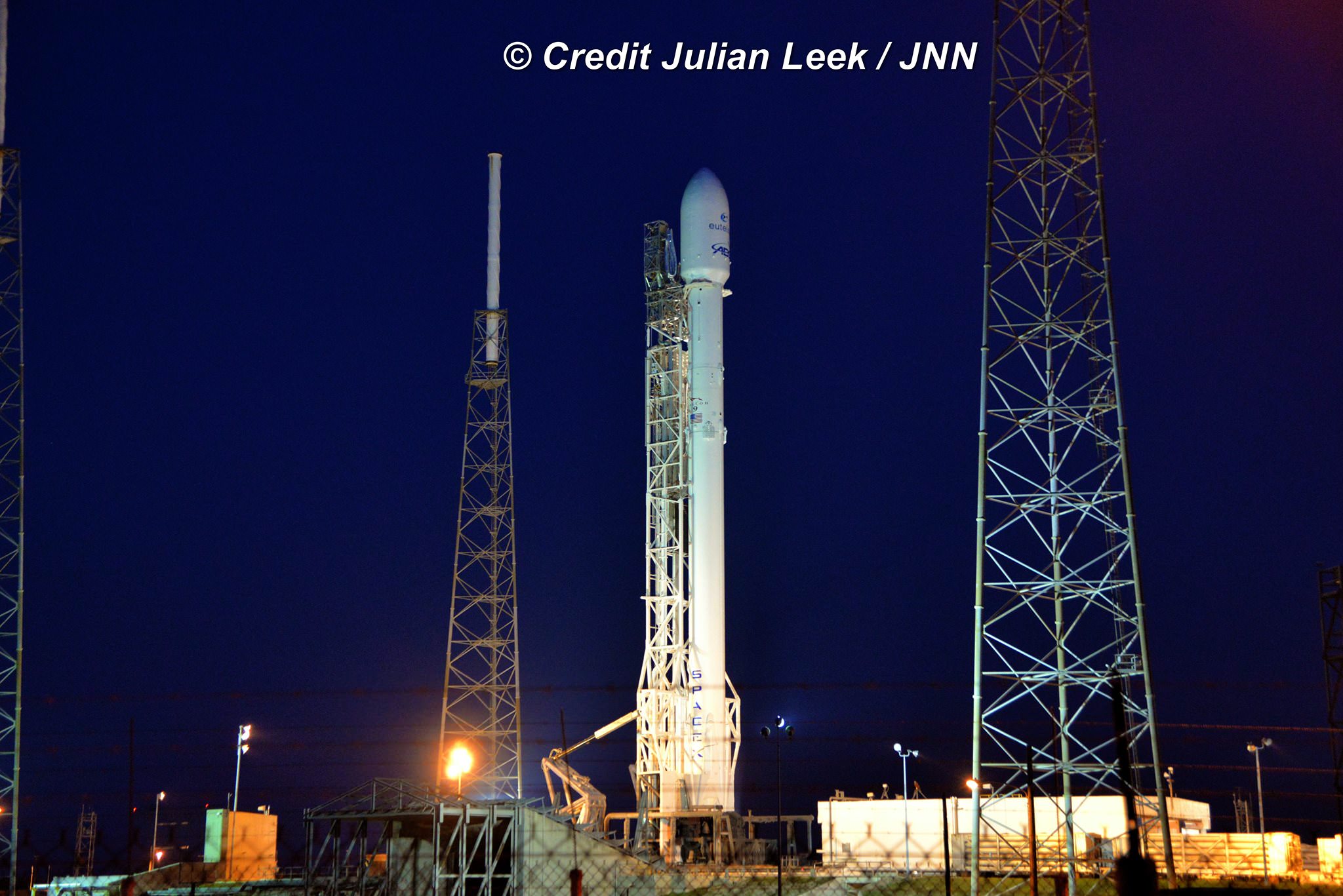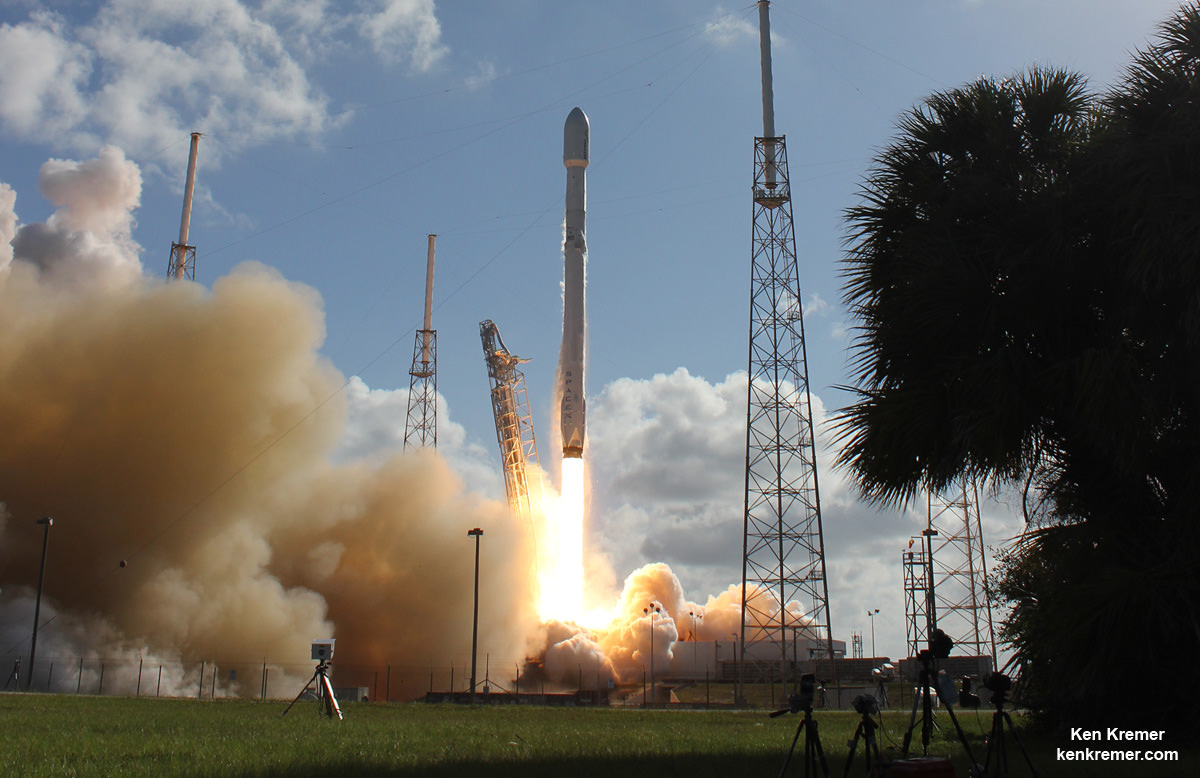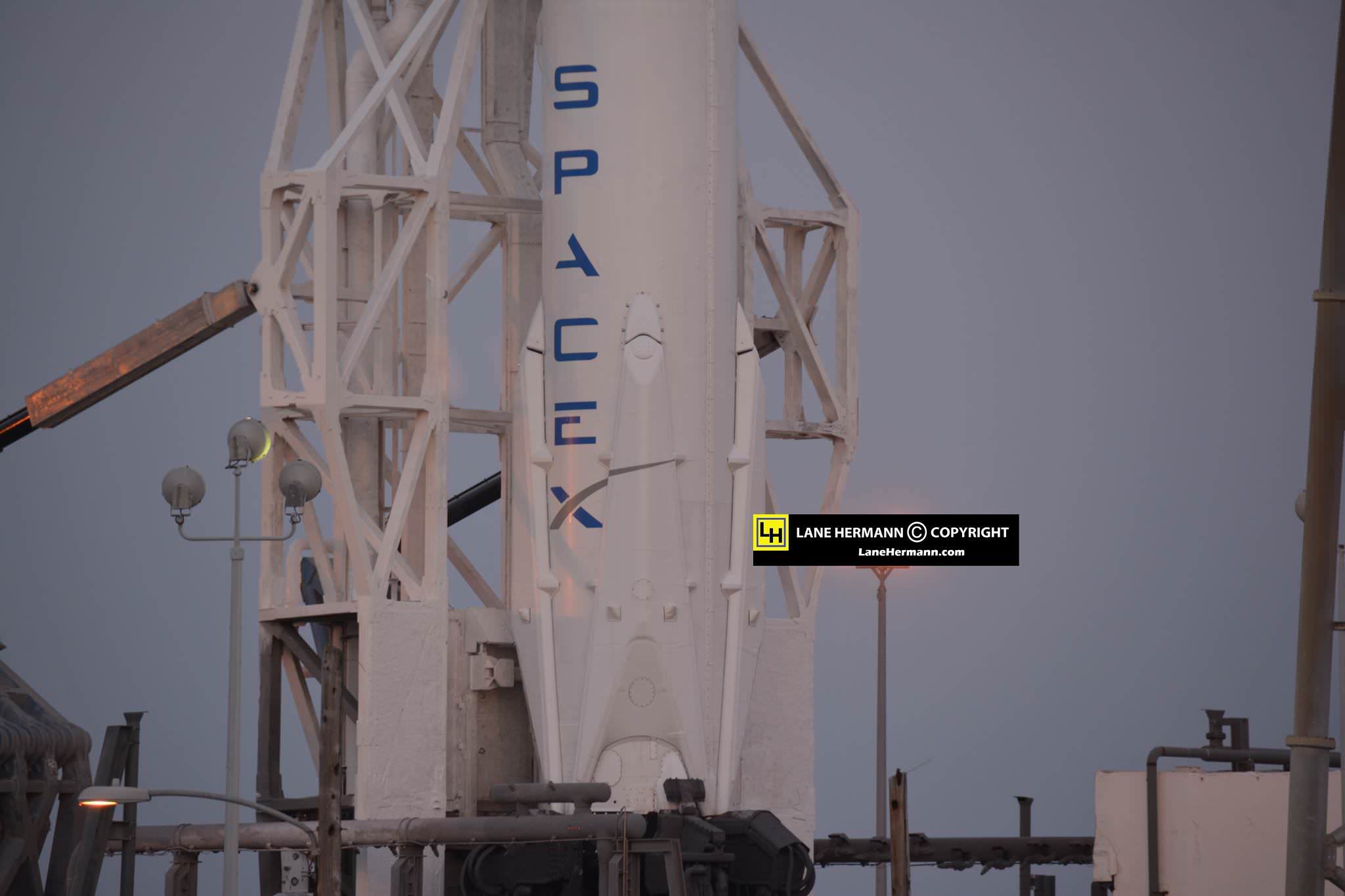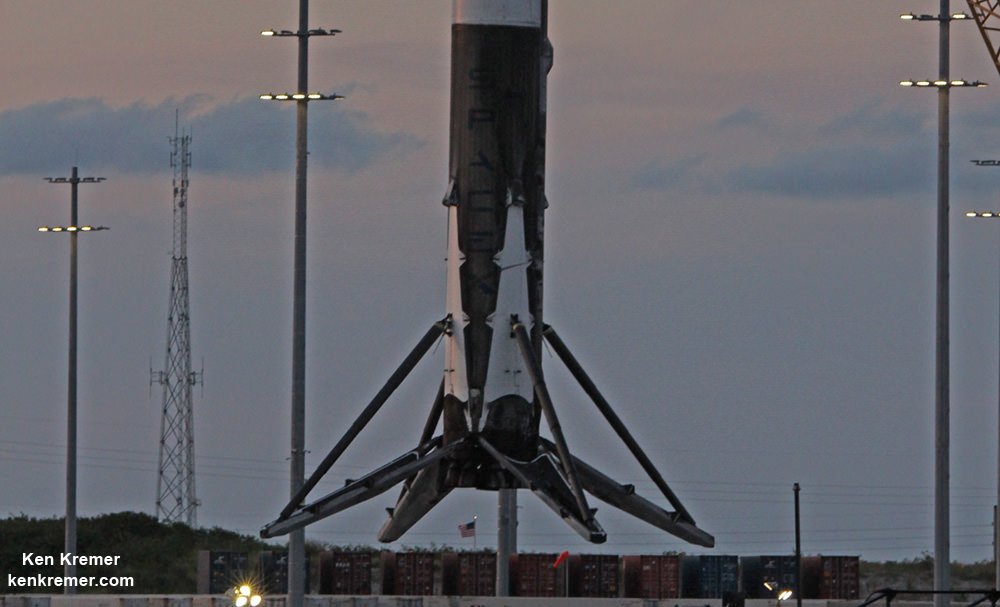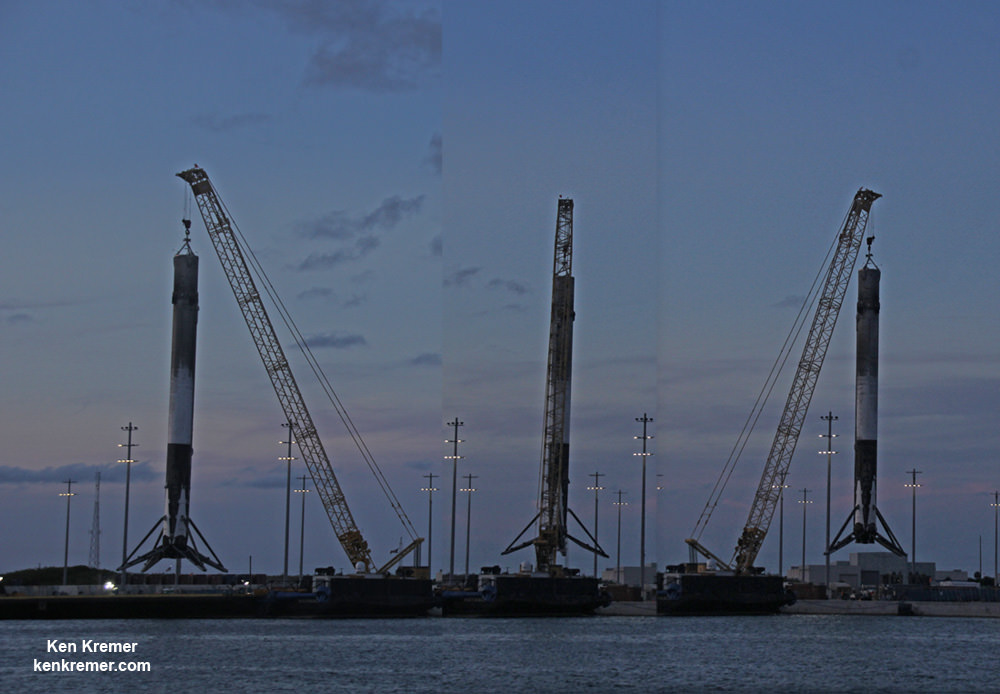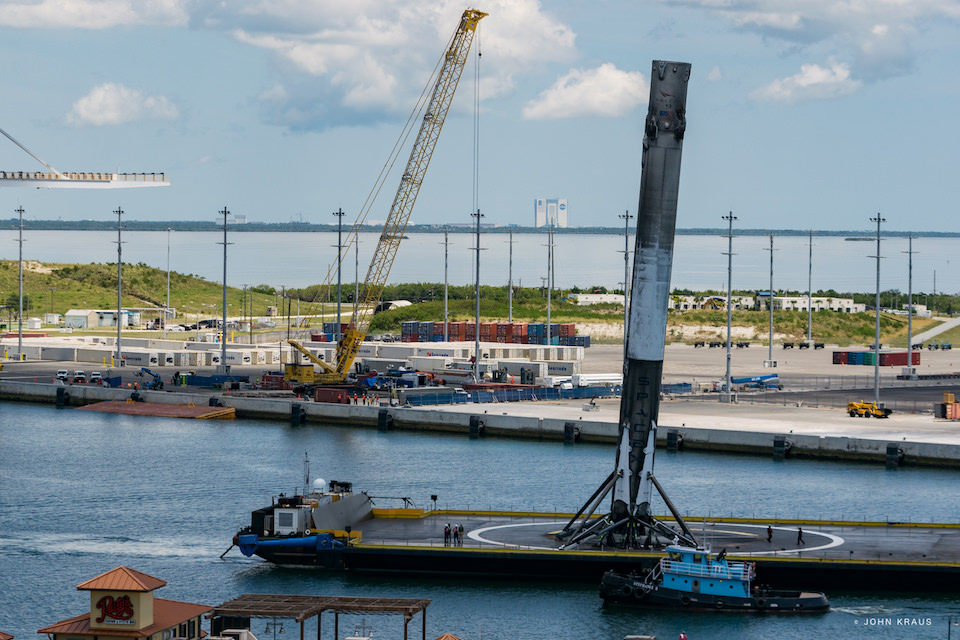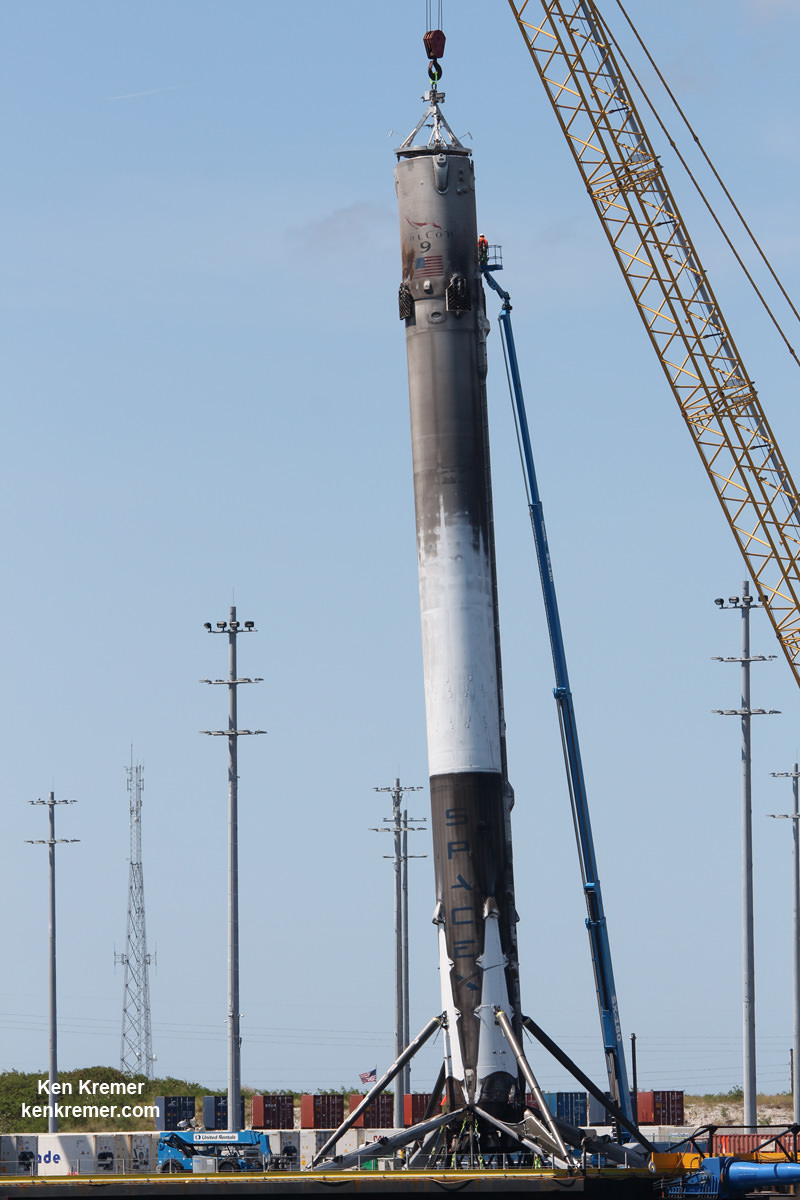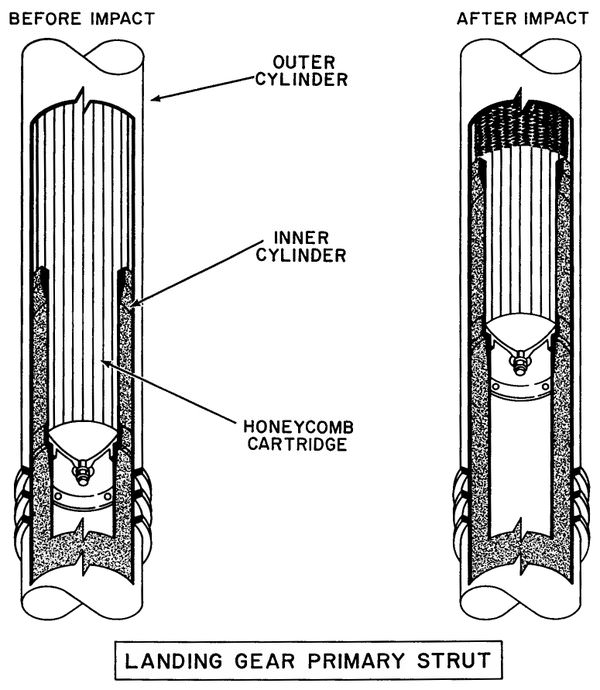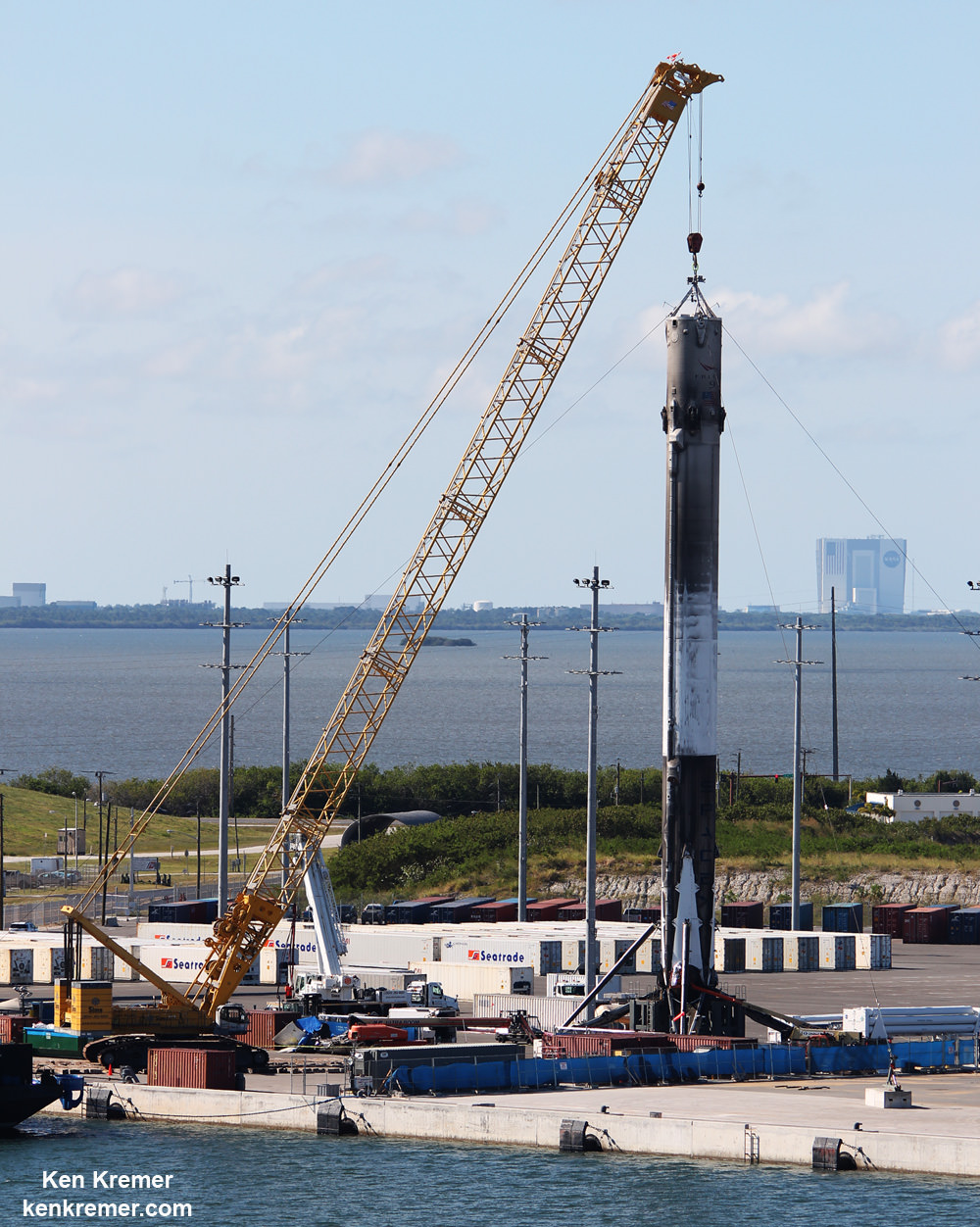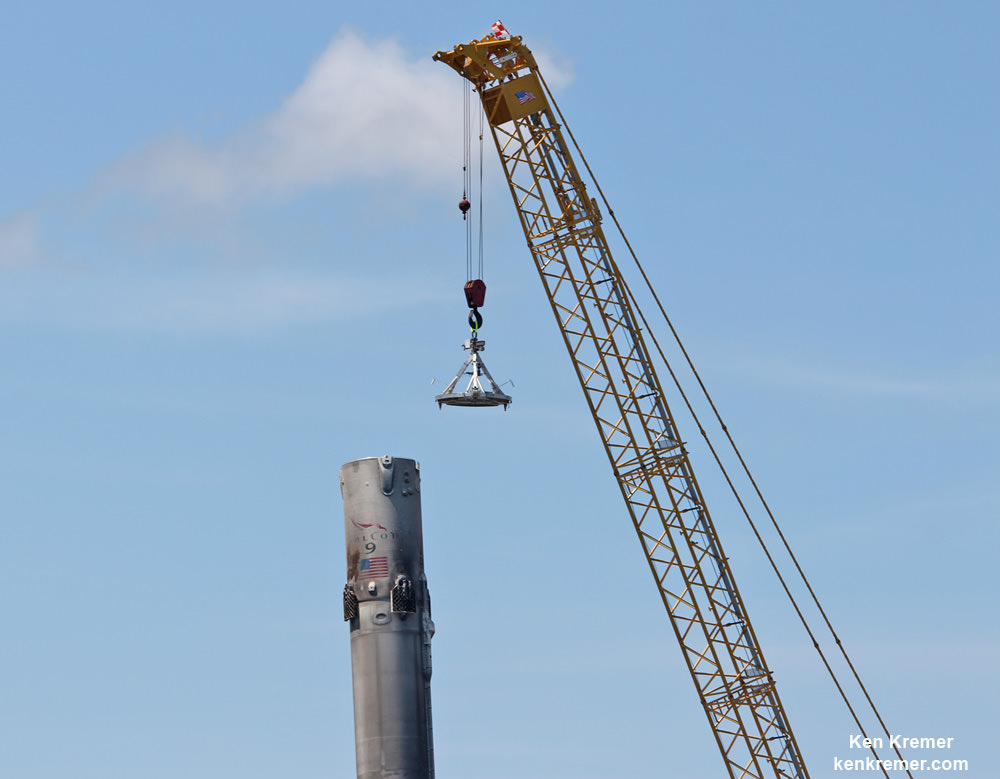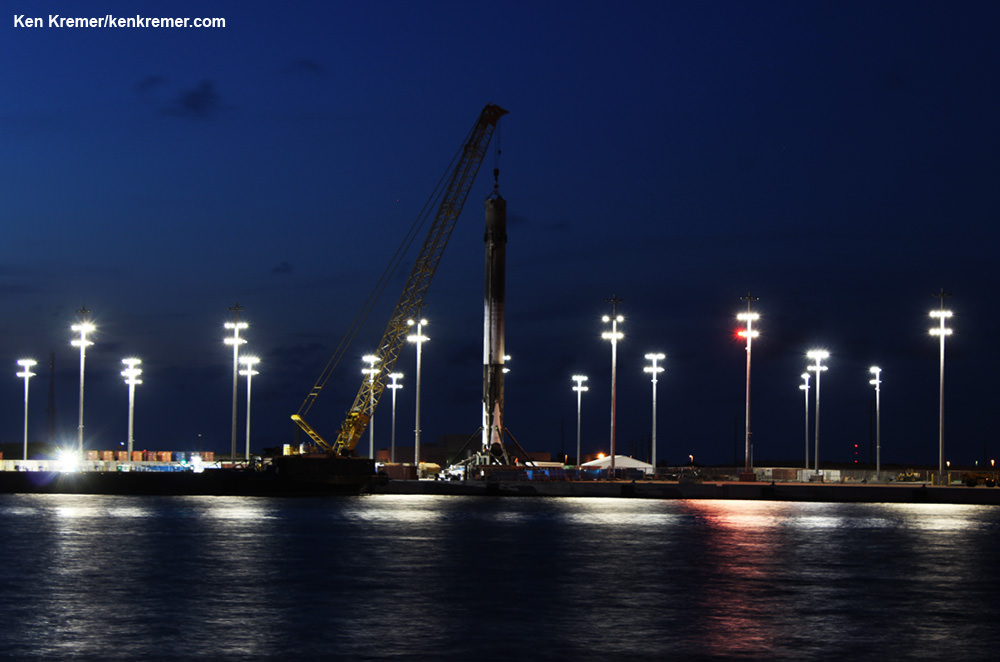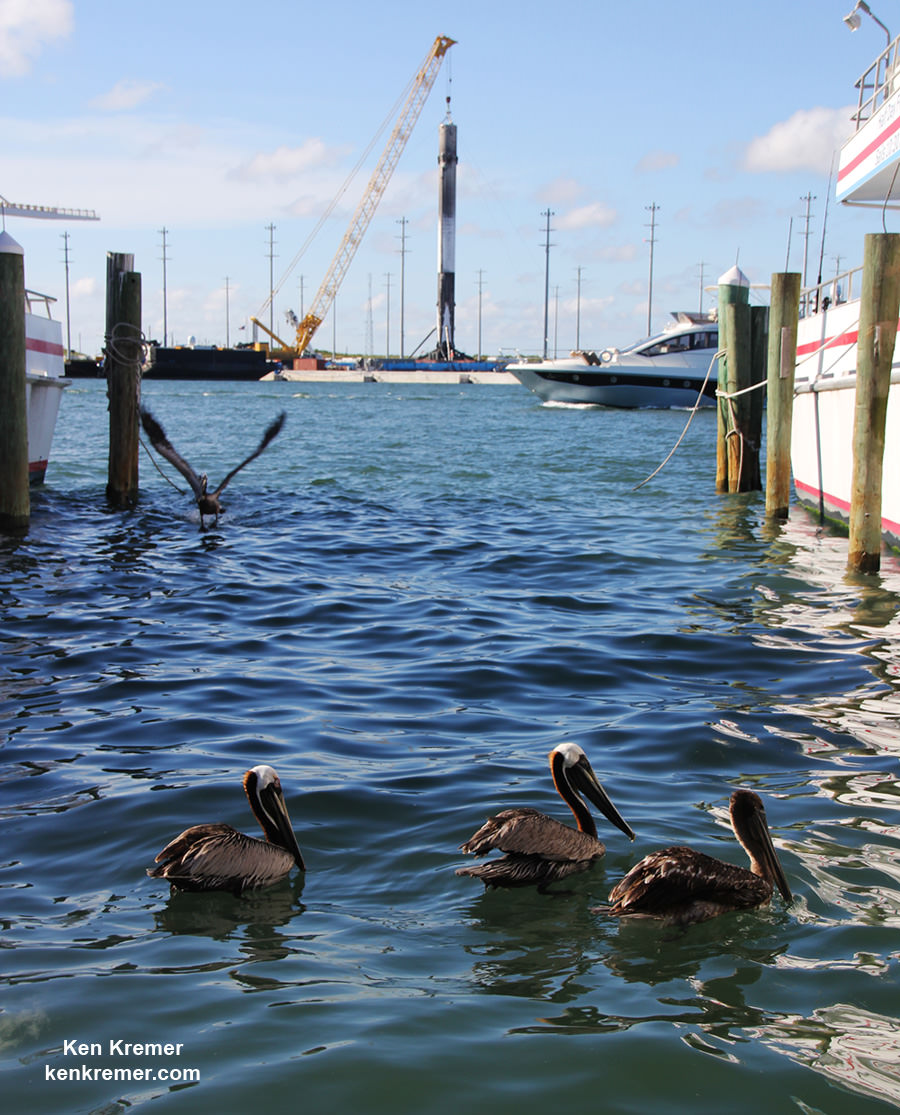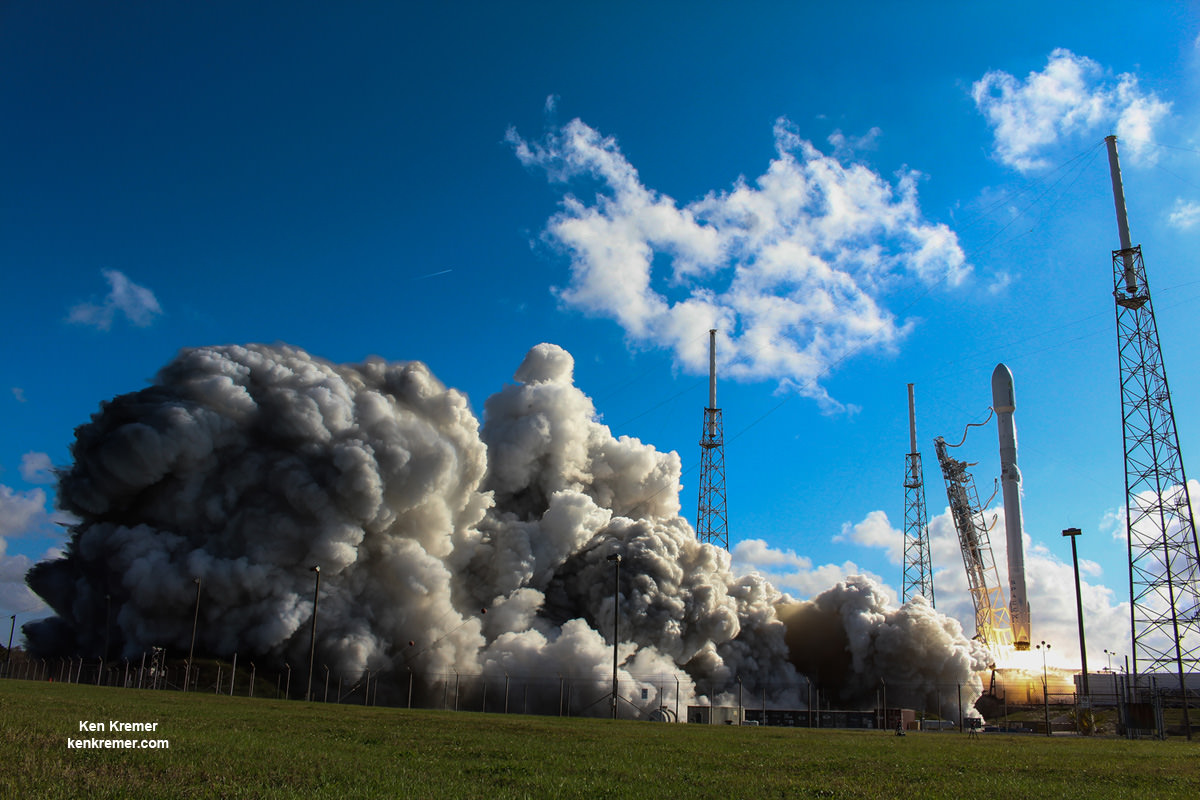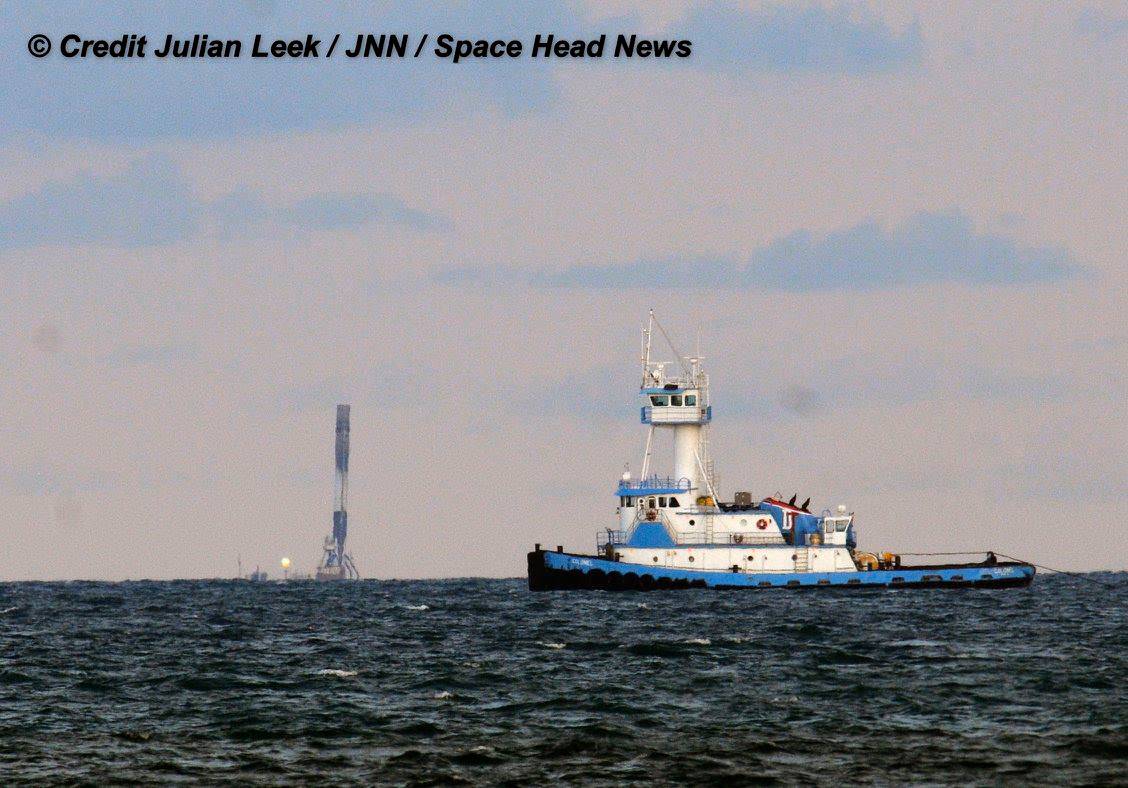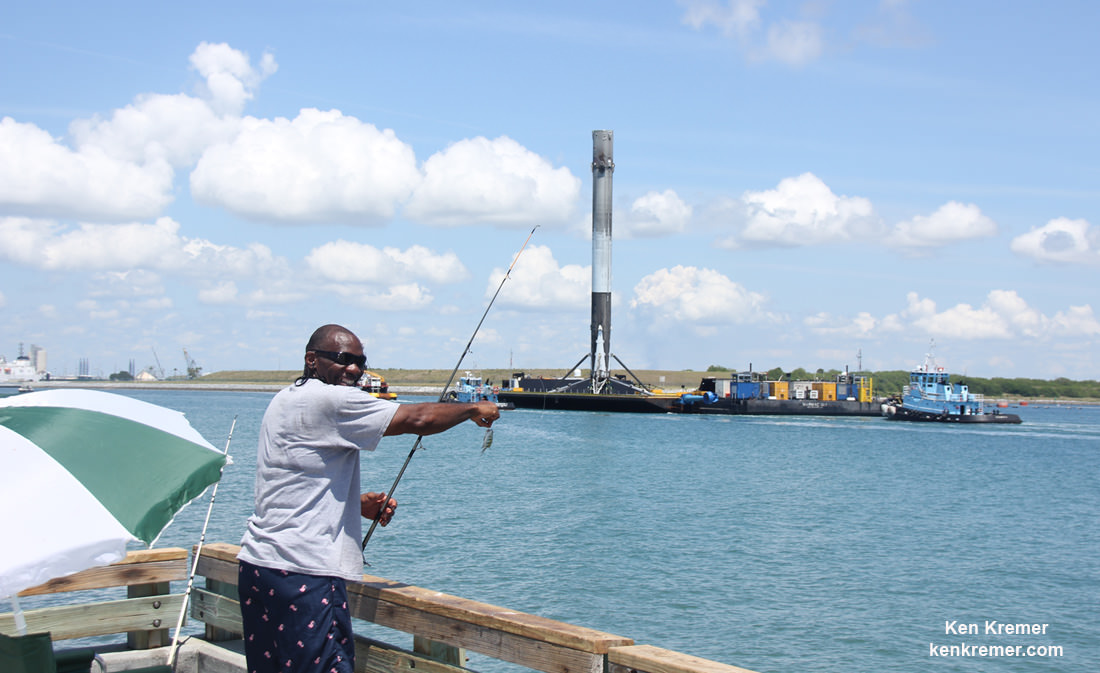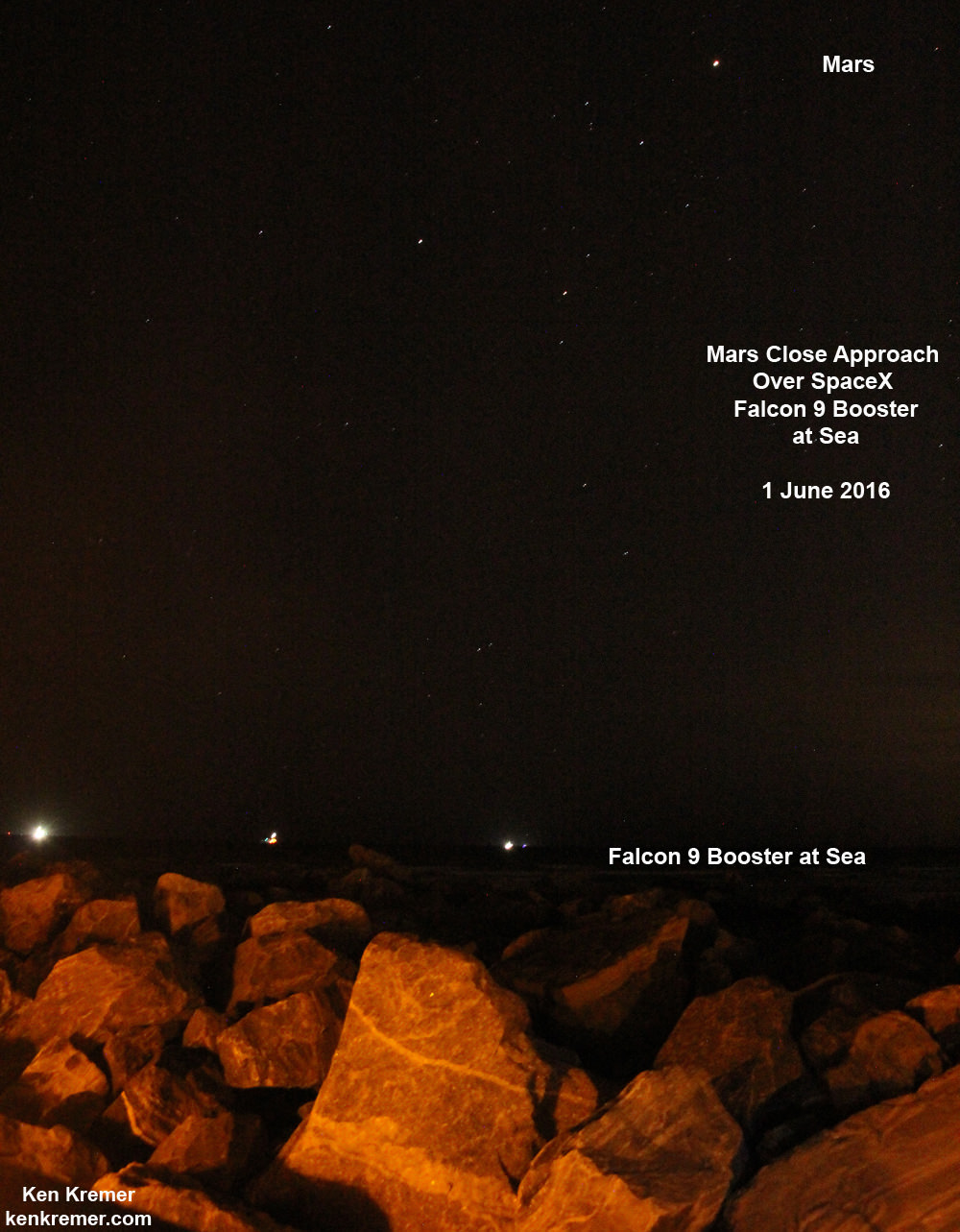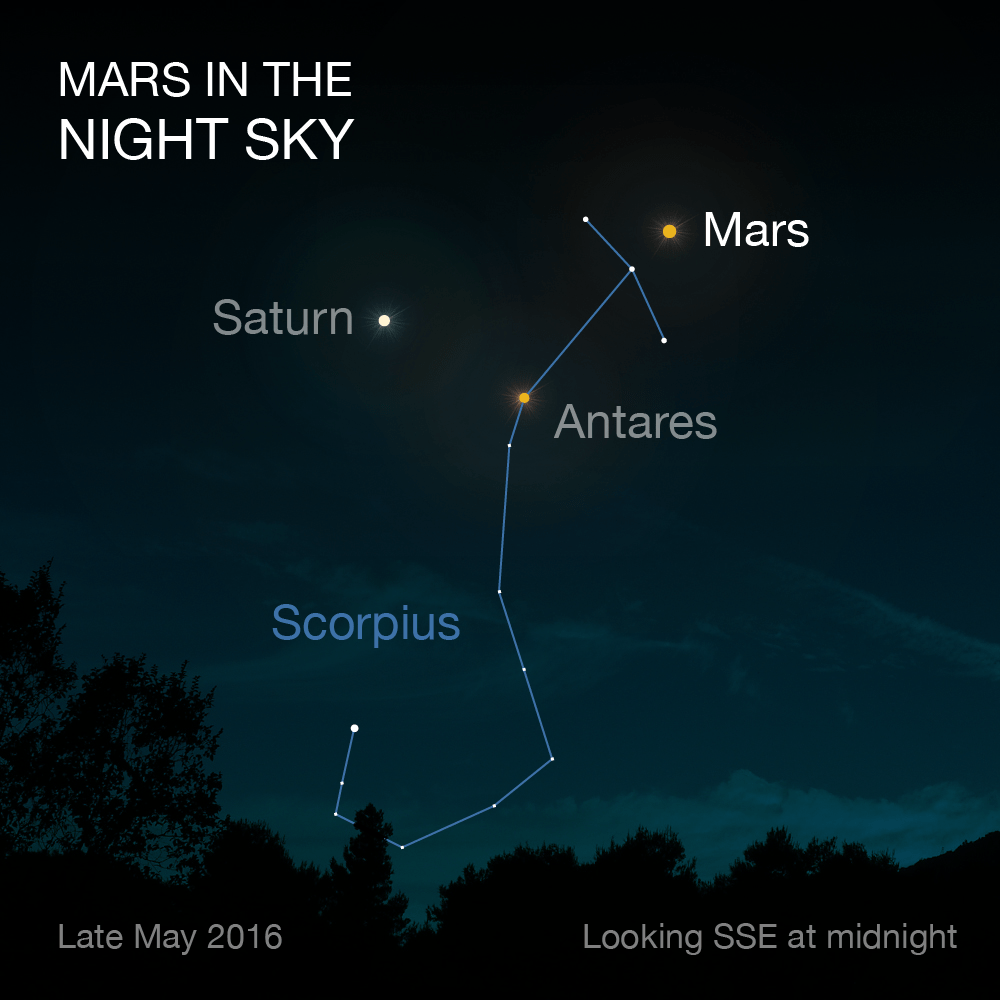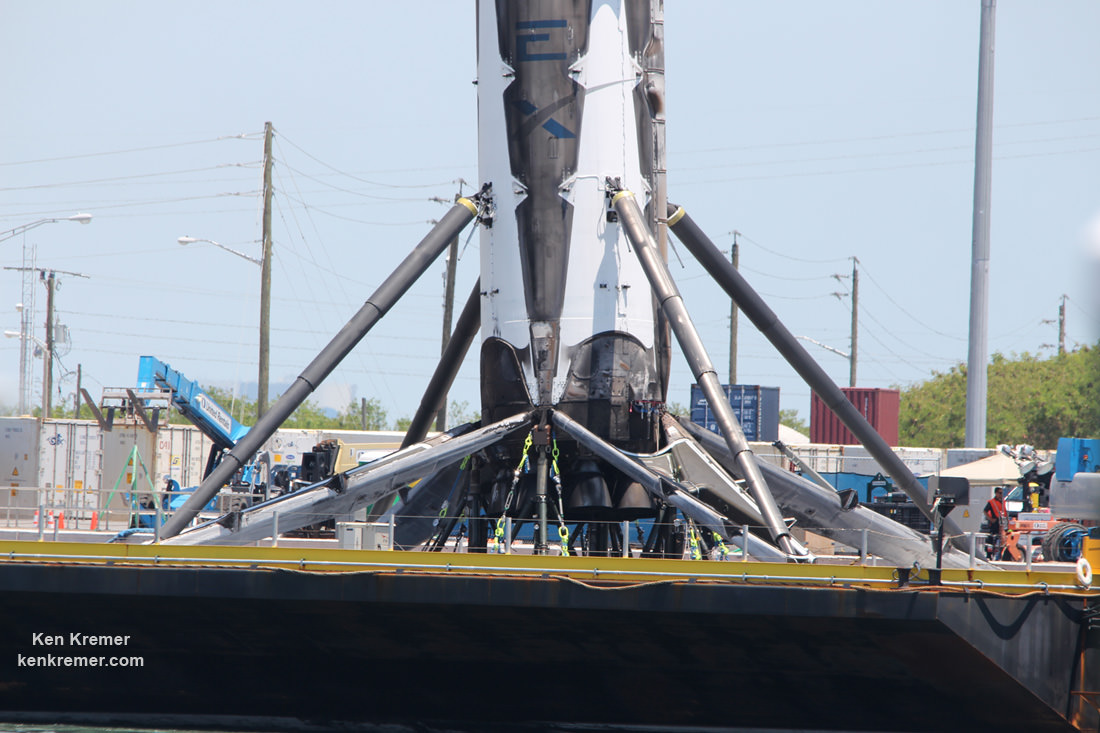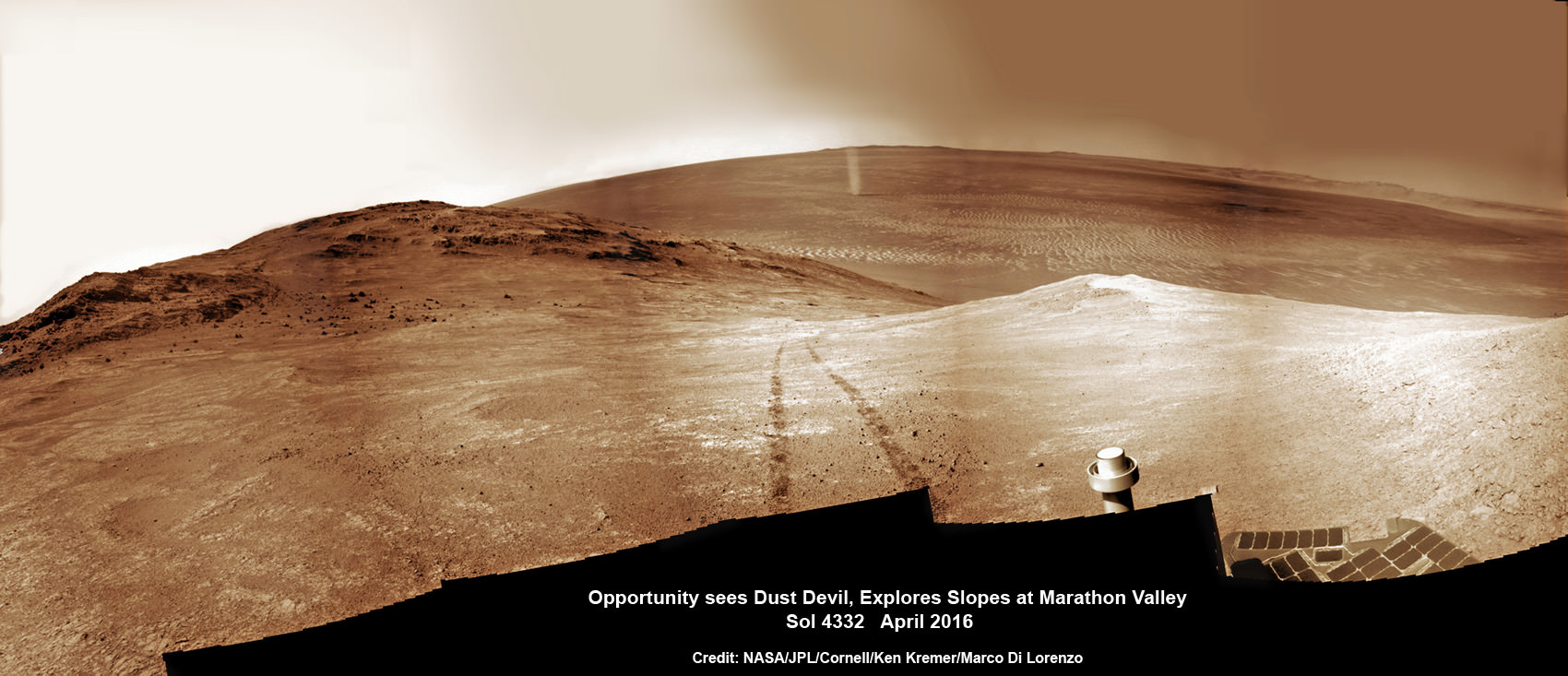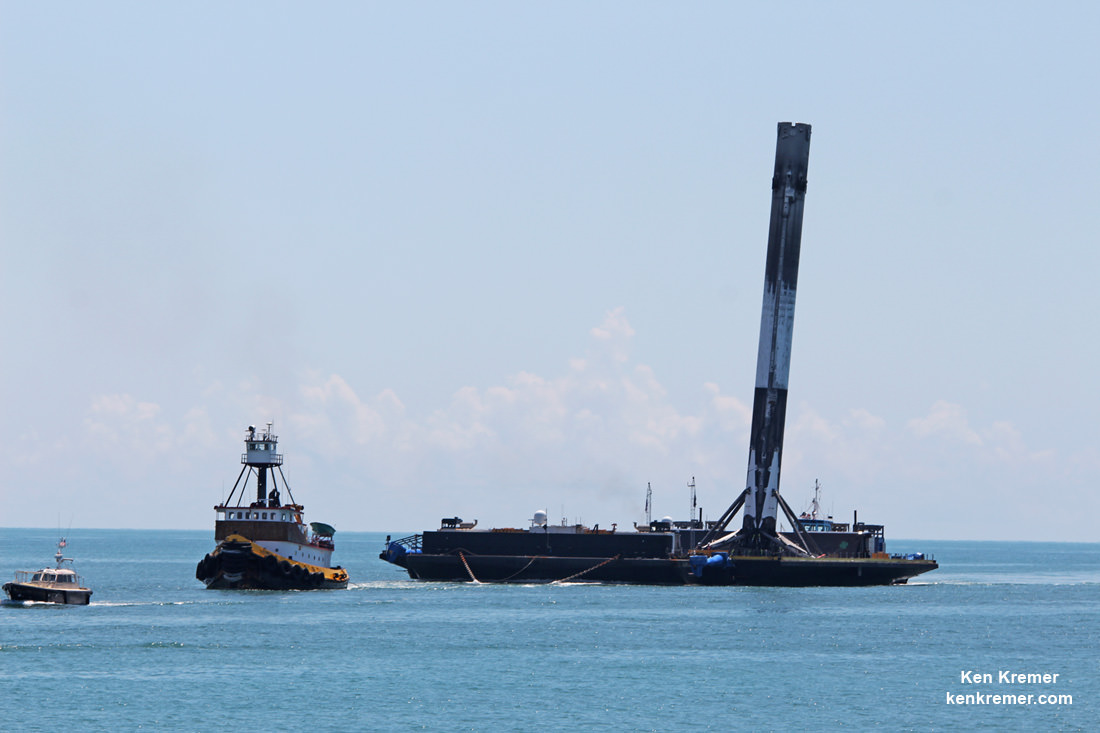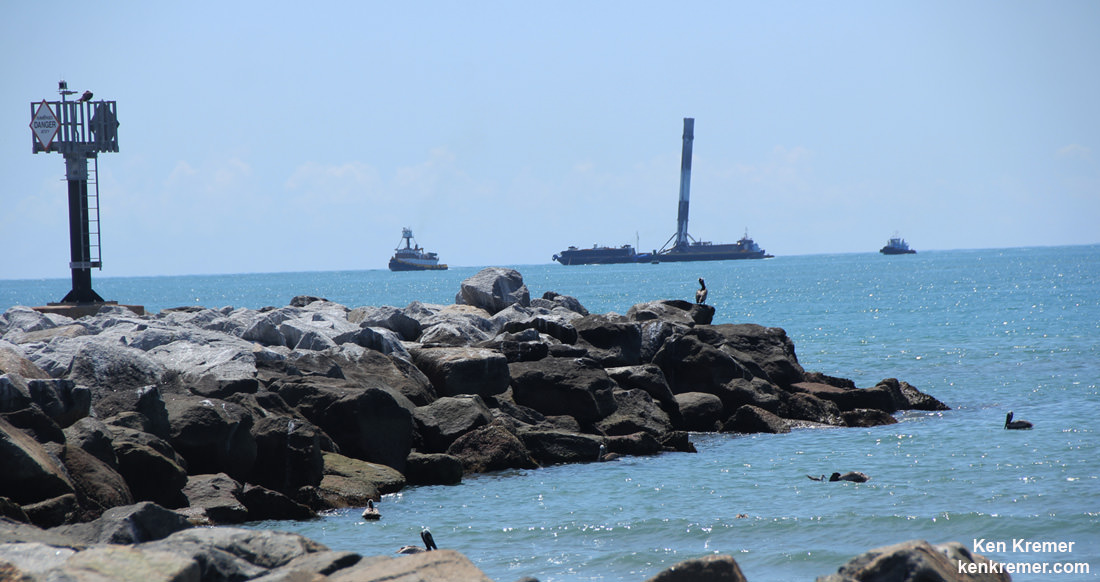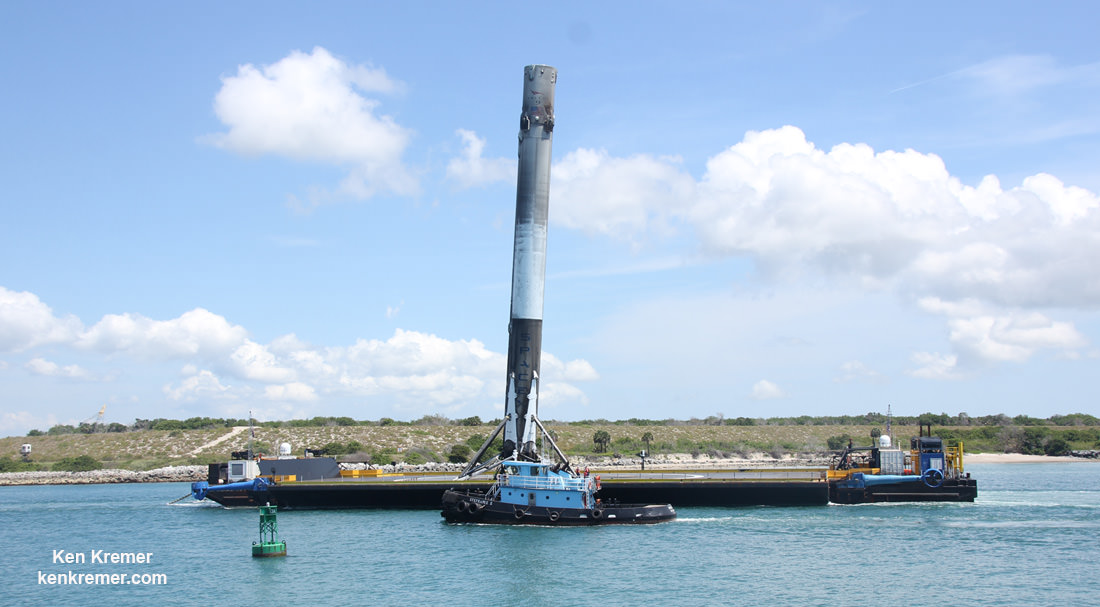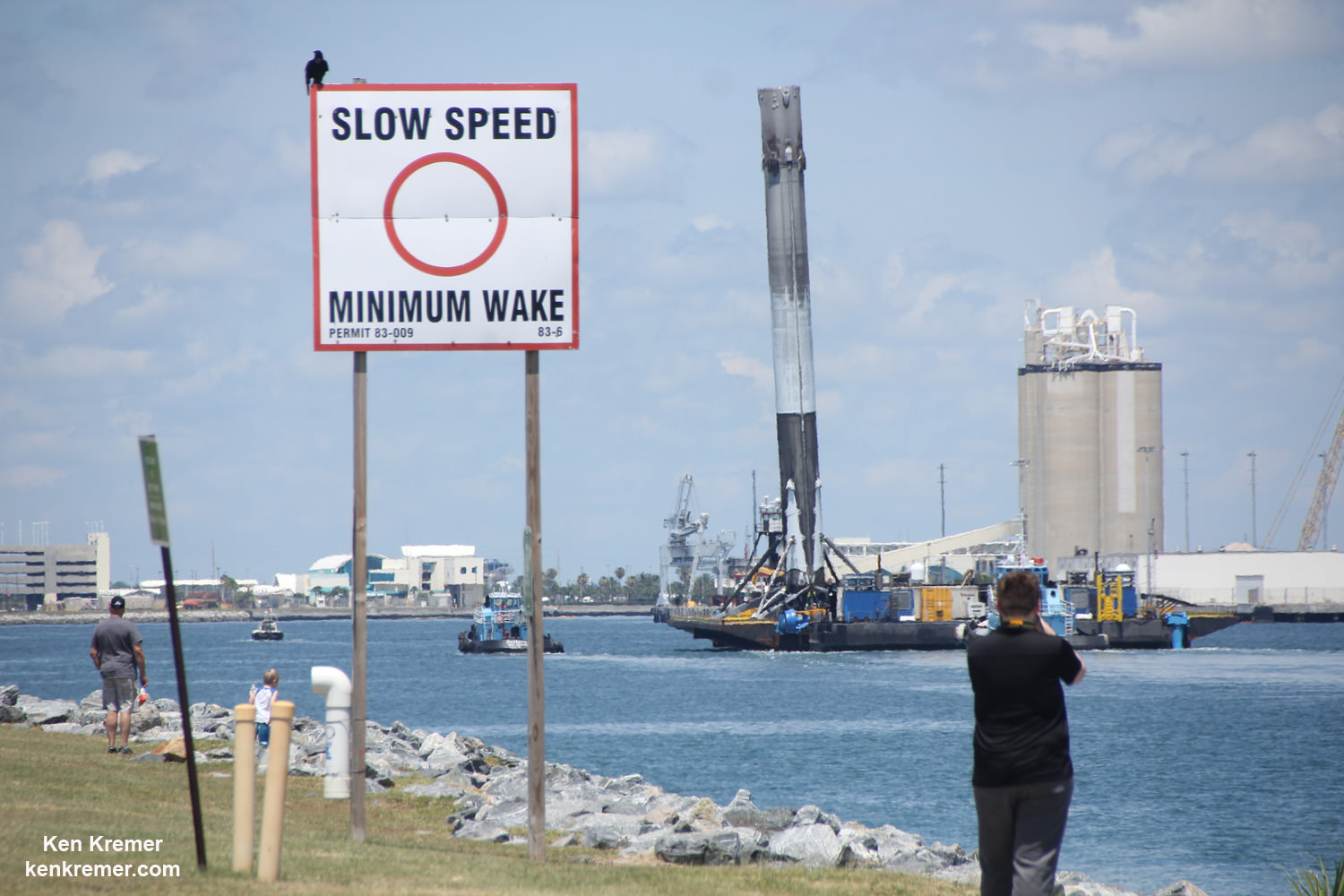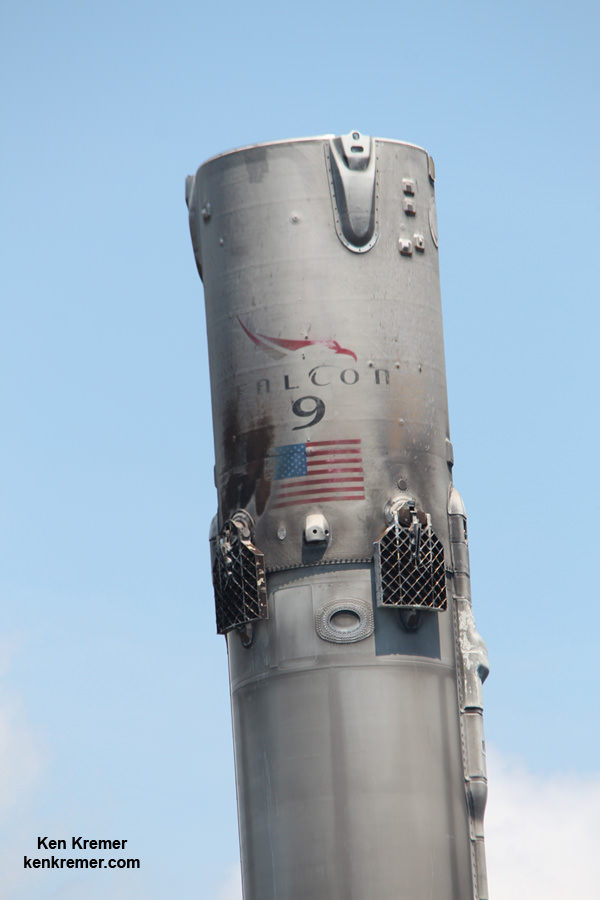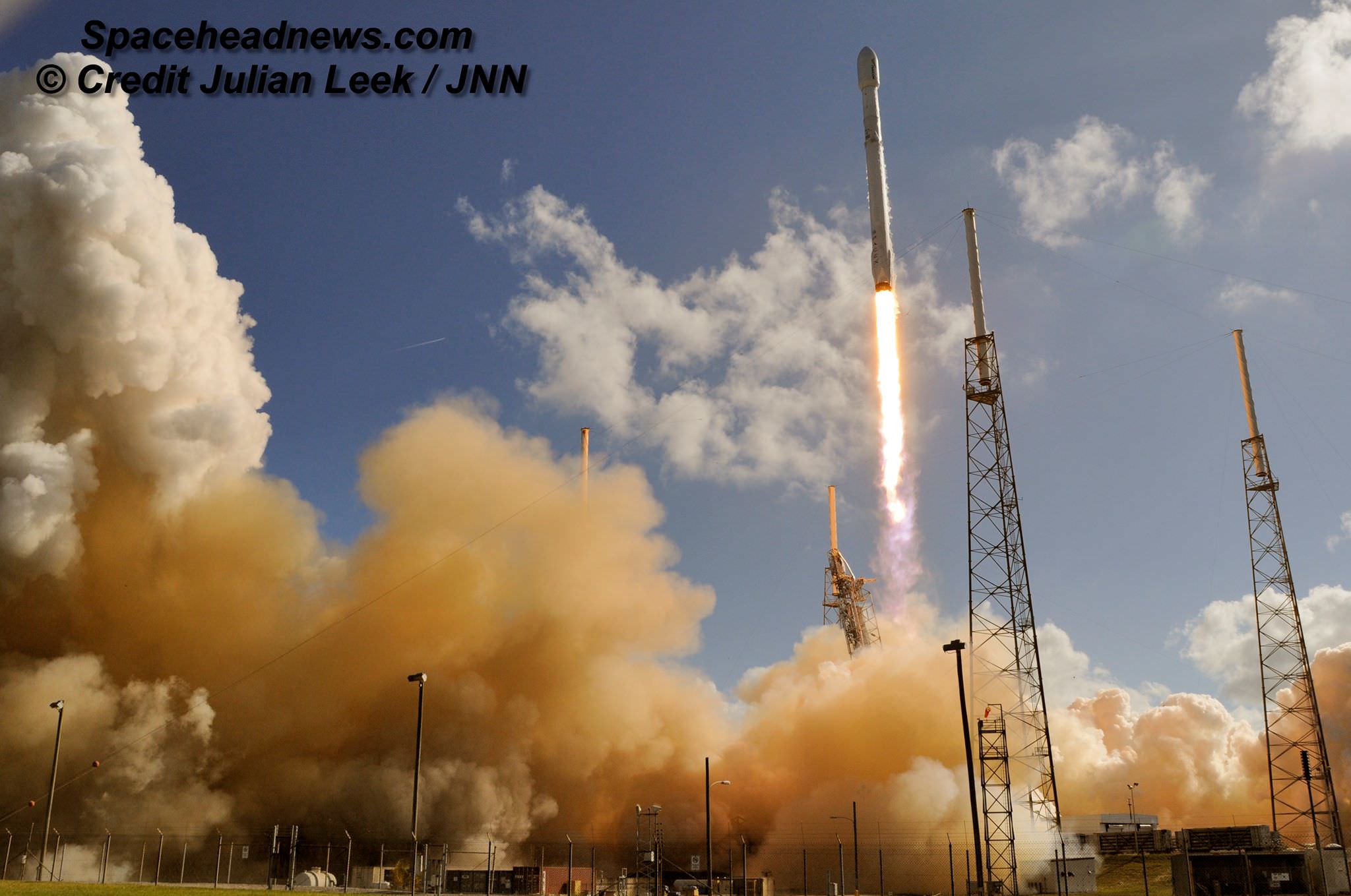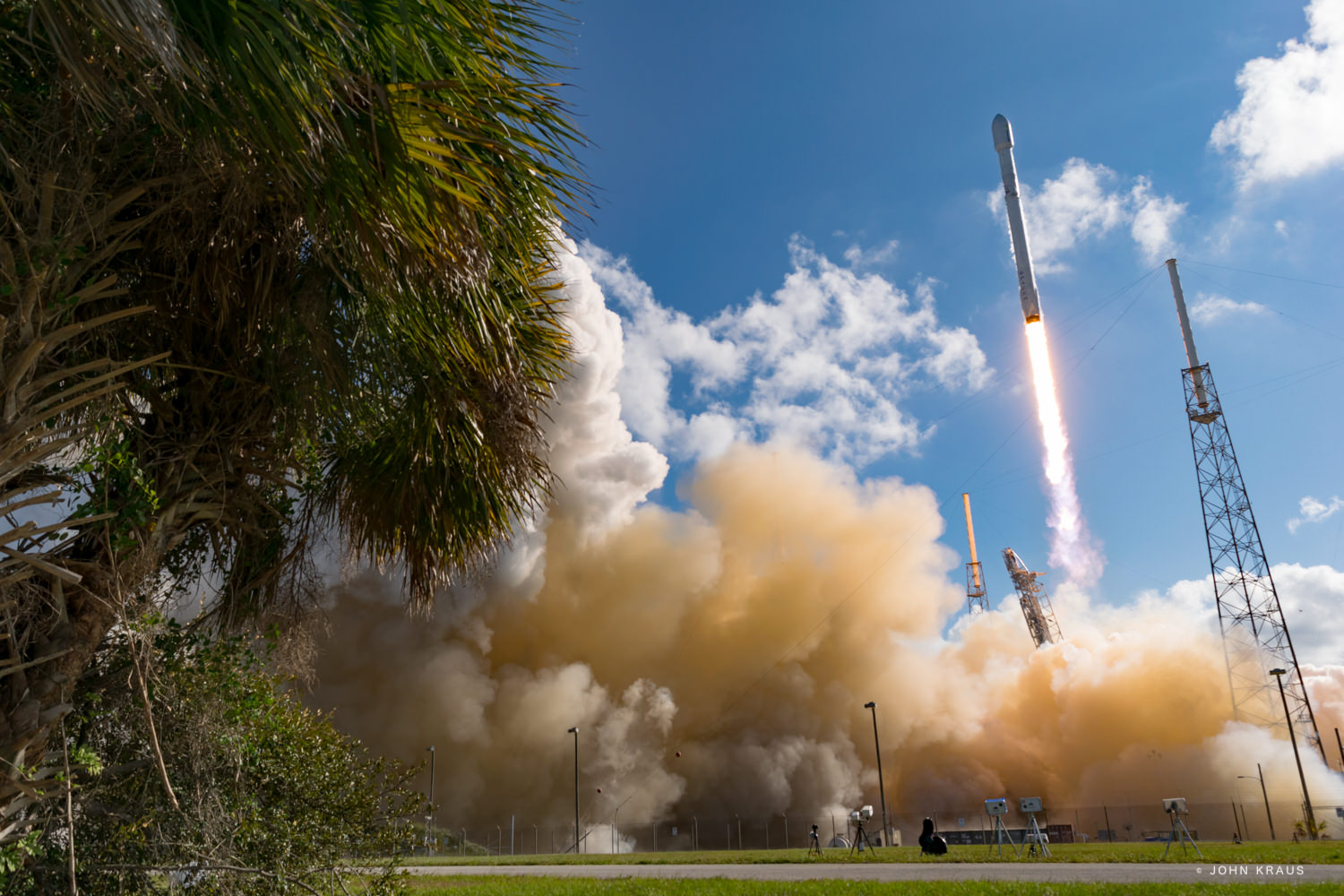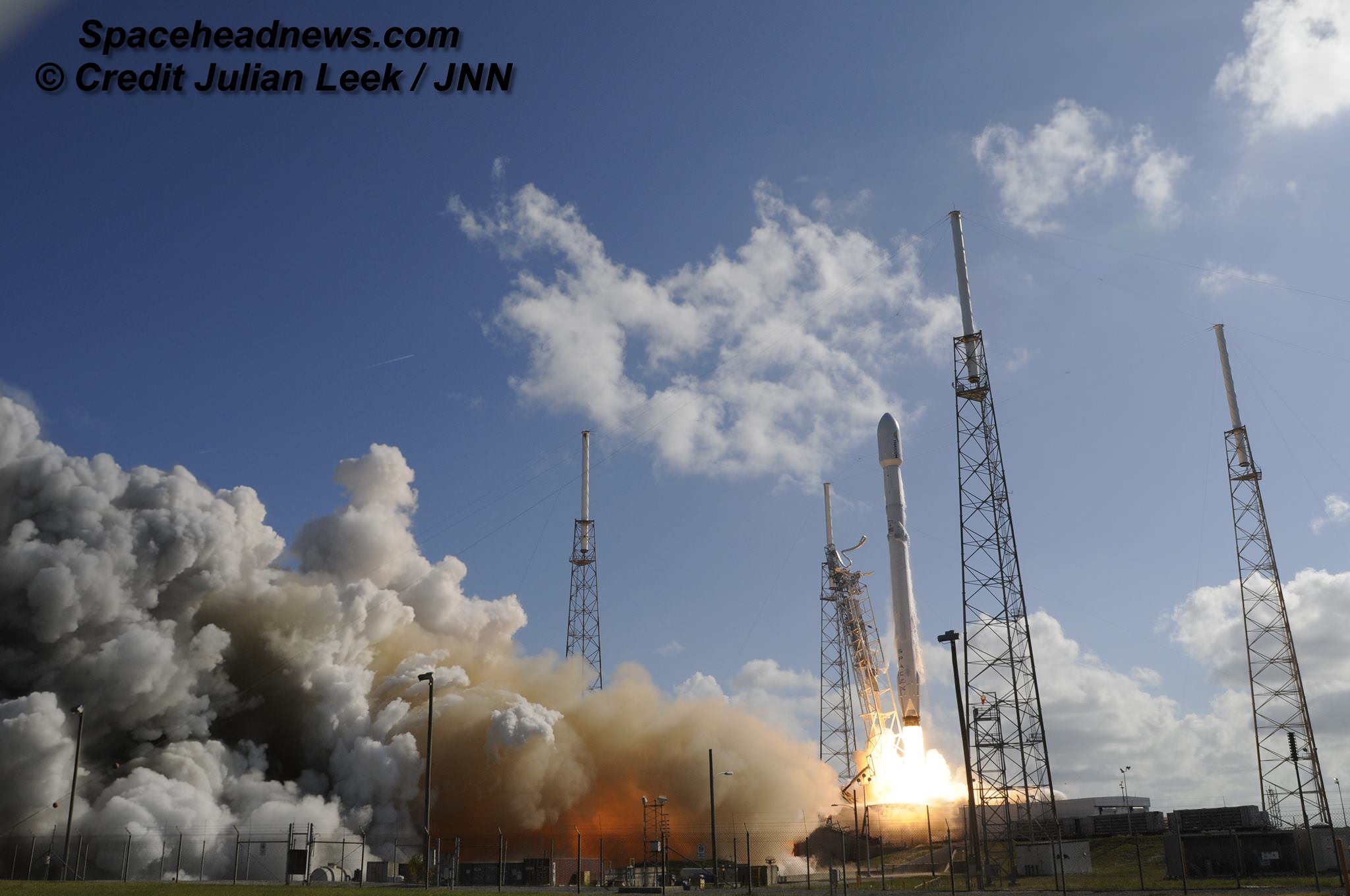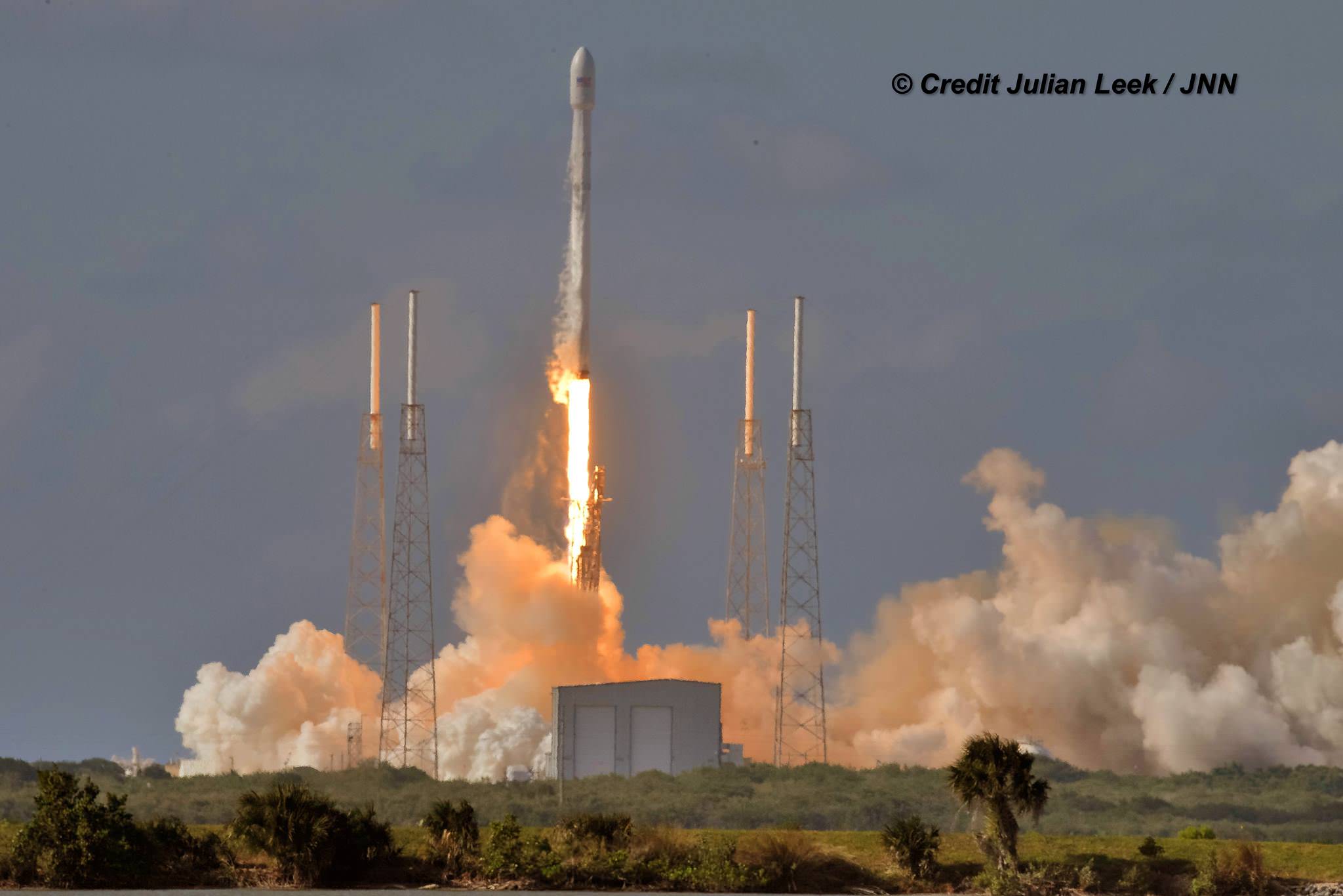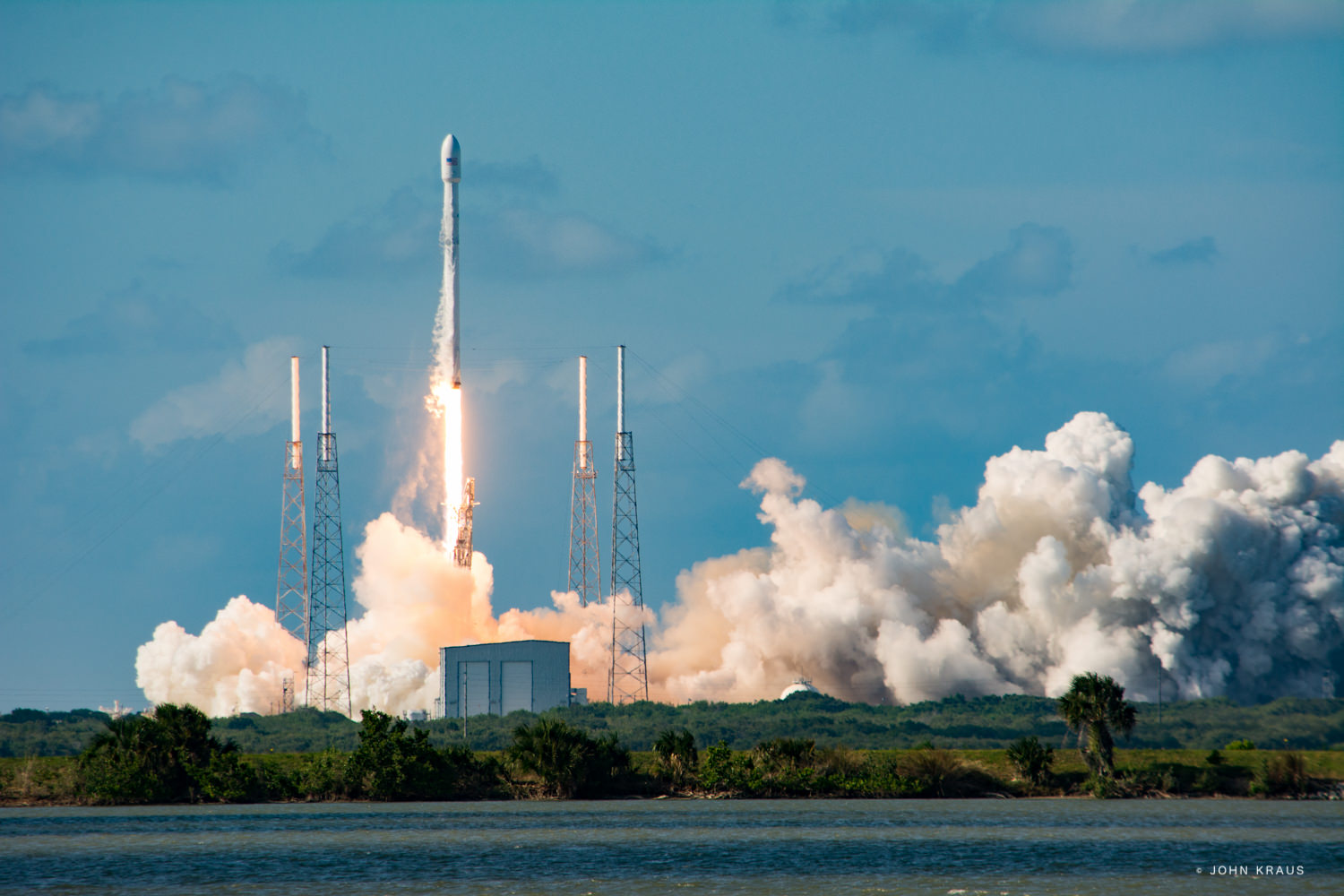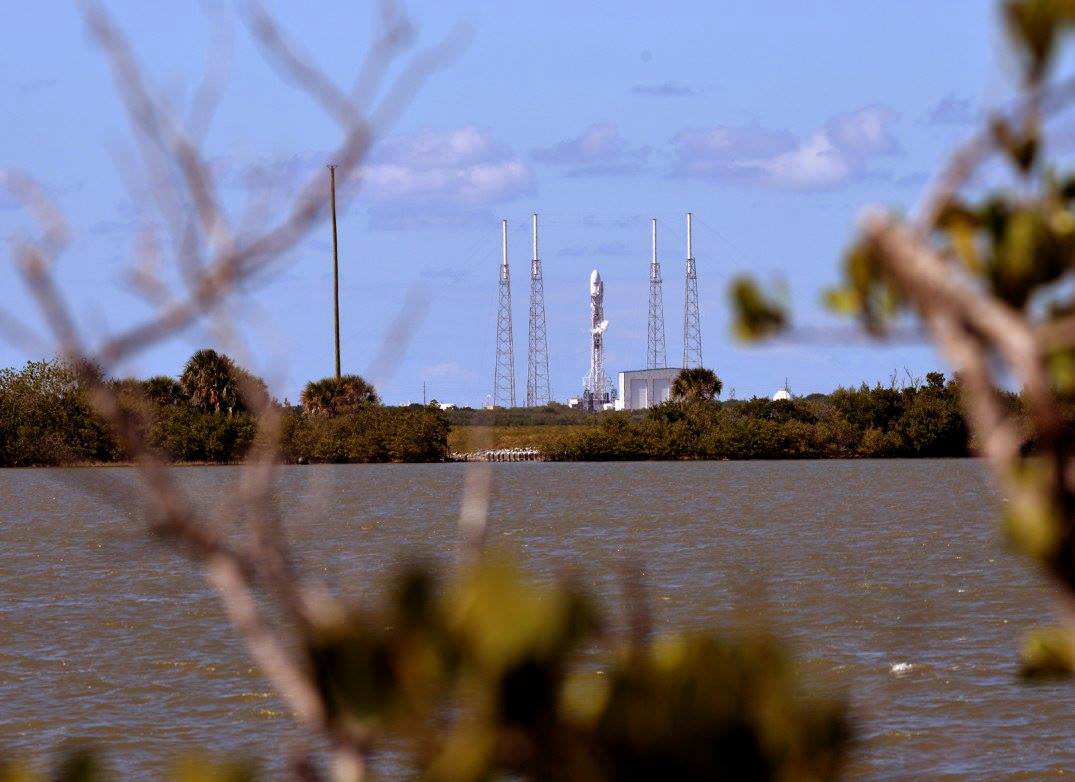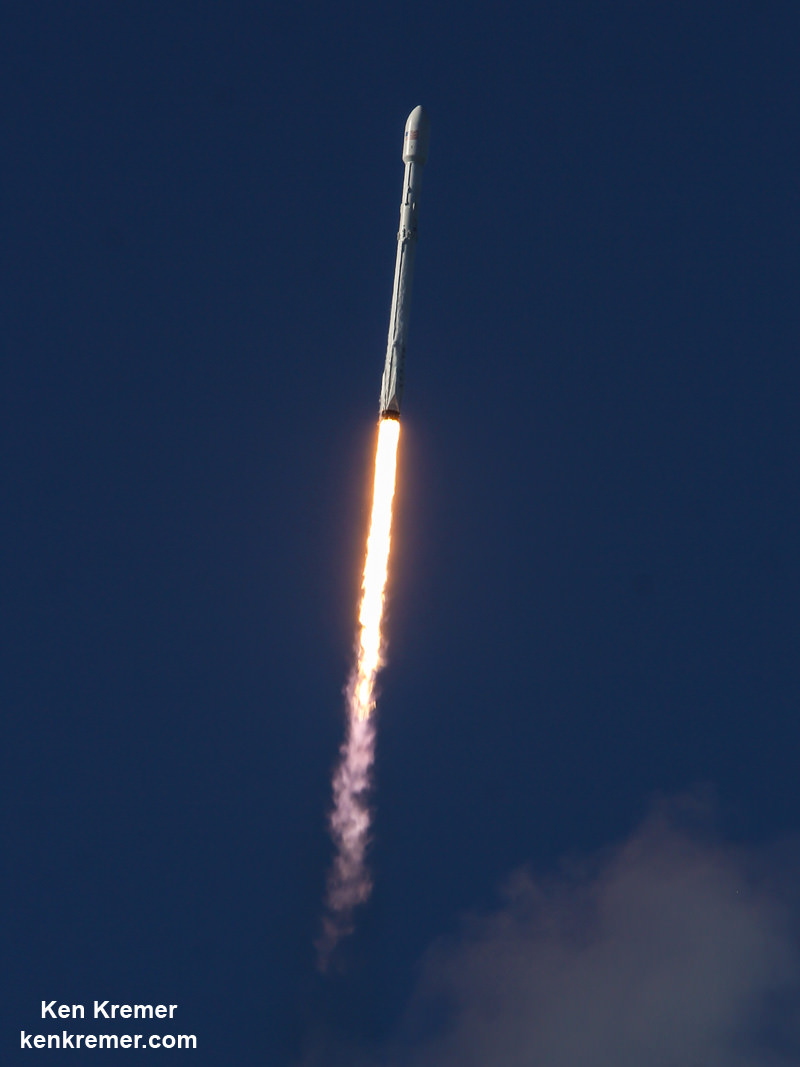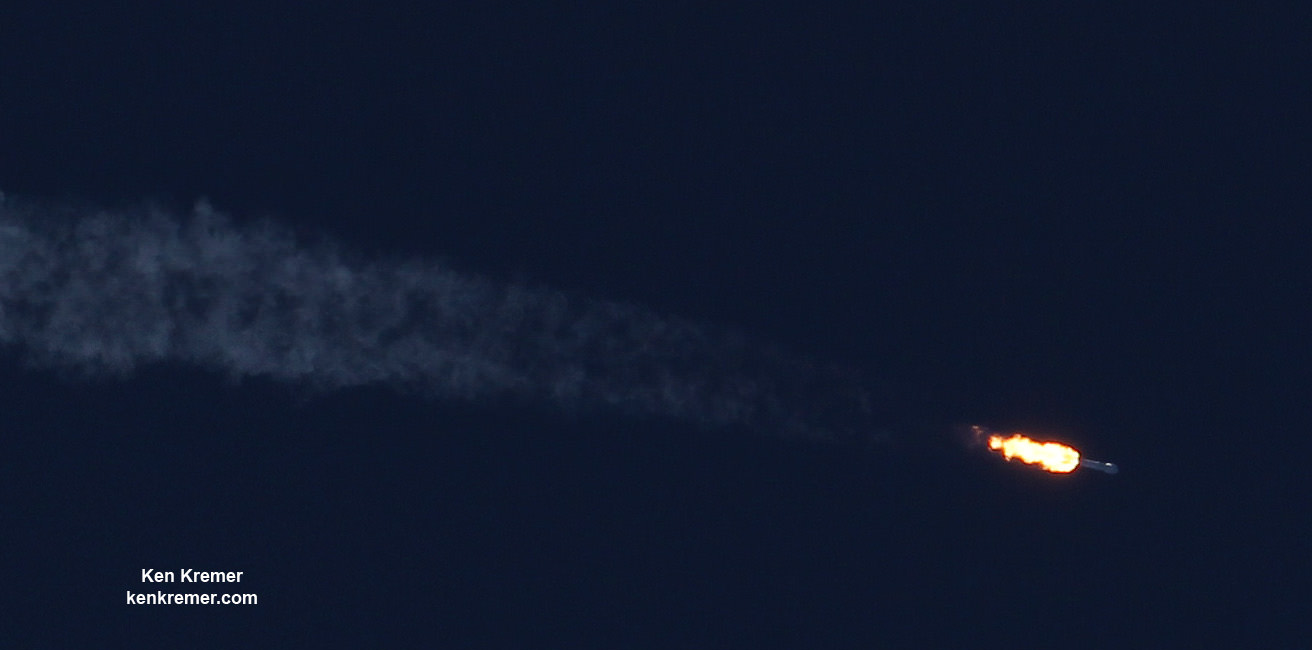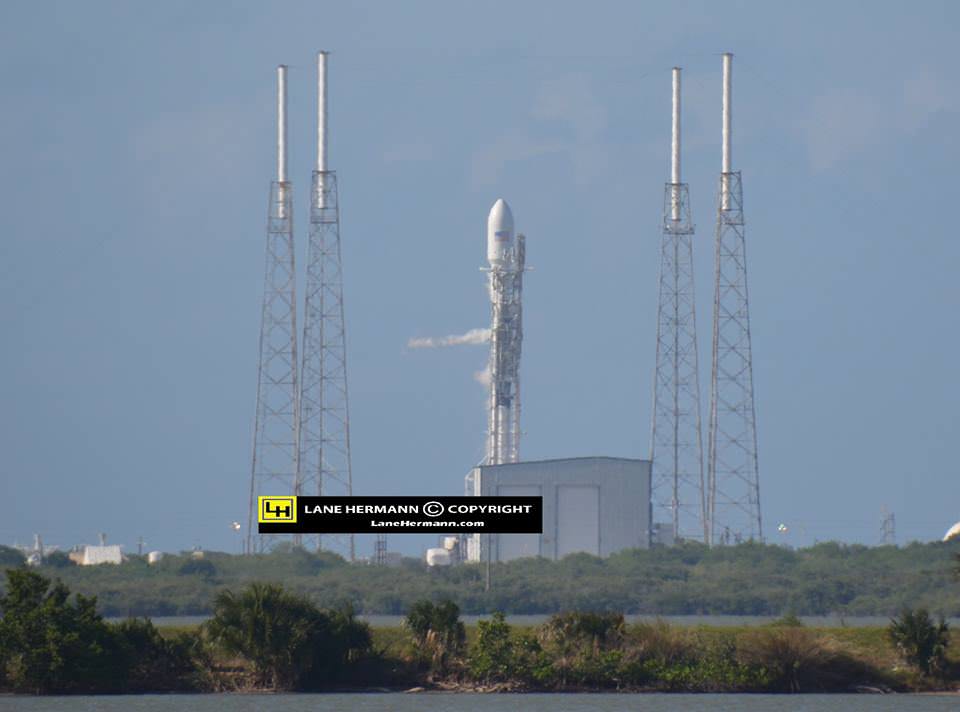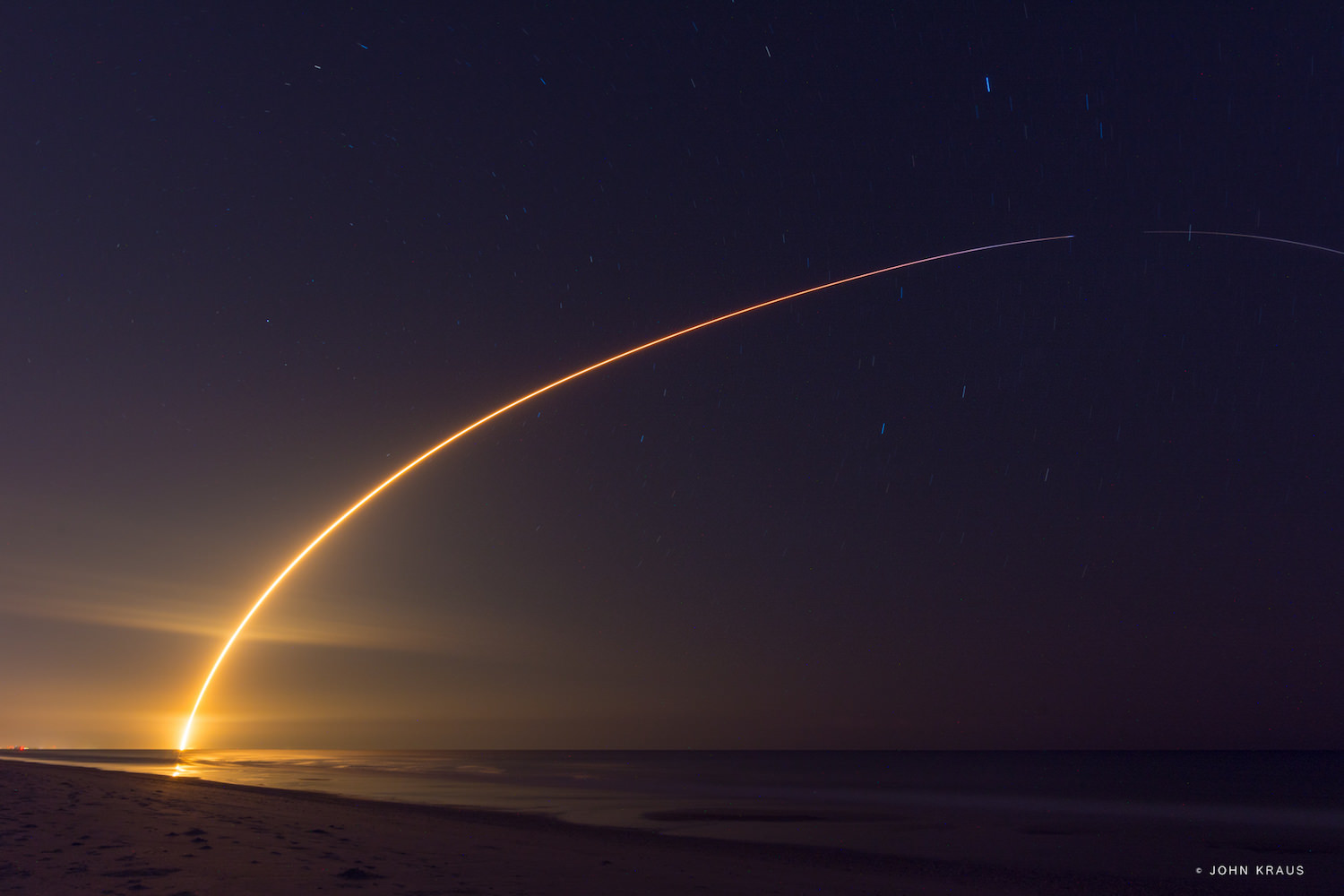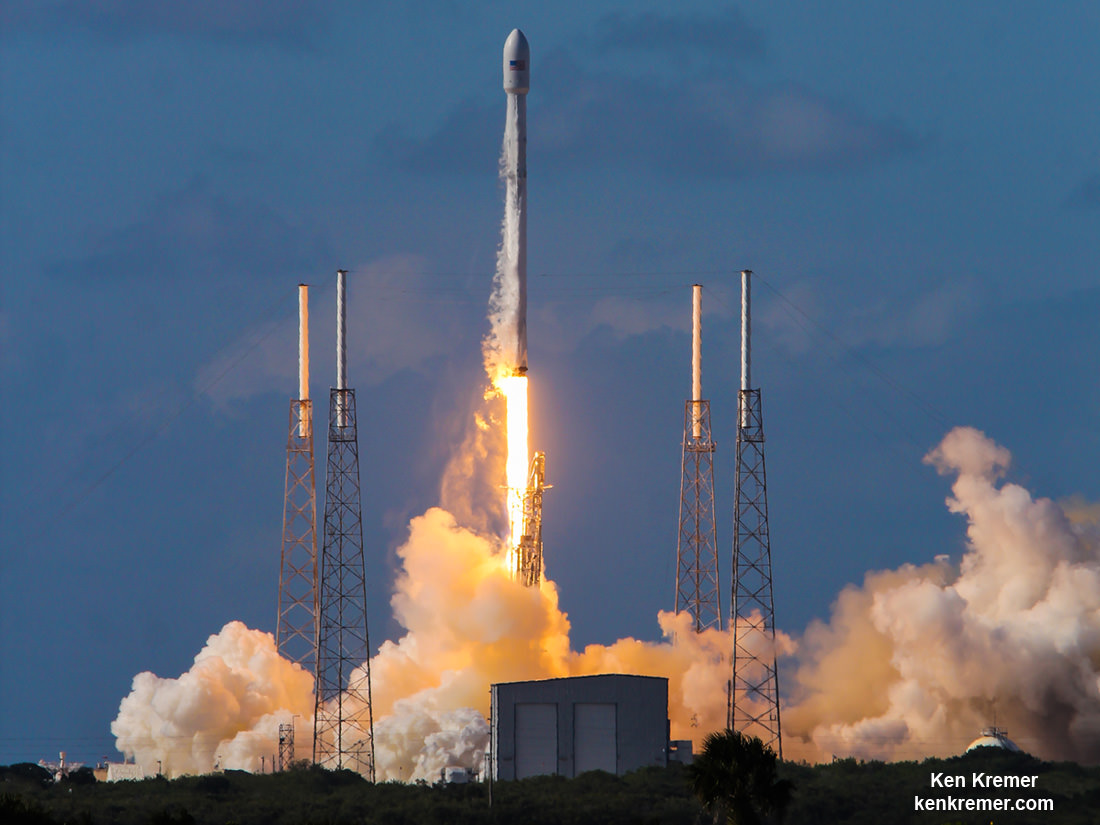
KENNEDY SPACE CENTER, FL – In a breathtaking feat mesmerizing hordes of thrilled spectators, SpaceX nailed today’s (July 18) back to back post midnight launch and landing of the firms Falcon 9 first stage tasked to carry a cargo Dragon loaded with over two tons of critical science, supplies and a crew docking port to the space station for NASA.
Liftoff of the SpaceX Falcon 9 rocket in its upgraded, full thrust version and the Dragon CRS-9 resupply ship took place right on time at 12:45 a.m. EDT Monday, July 18, from Space Launch Complex 40 at Cape Canaveral Air Force Station in Florida.
SpaceX simultaneously successfully delivered over 5000 pounds (2200 kg) of research supplies to orbit for NASA in a commercial cargo Dragon ship, as the primary mission goal – and soft landed the approximately 60,000 pound Falcon 9 first stage on land, as the experimental secondary mission goal.
“The Falcon 9 first stage we landed is in excellent shape,” Hans Koenigsmann, SpaceX vice president of Flight Reliability, told Universe Today at the 2 a.m. EDT post launch and landing media briefing early this morning.
See my launch and landing streak shot and photos herein, including deployment of the four landing legs in the final seconds before propulsive touchdown.
The twin accomplishments will have far reaching implications for the exploration and exploitation of space for all humanity.
“Each commercial resupply flight to the space station is a significant event. Everything, from the science to the spare hardware and crew supplies, is vital for sustaining our mission,” said Kirk Shireman, NASA’s International Space Station Program manager.
“With equipment to enable novel experiments never attempted before in space, and an international docking adapter vital to the future of U.S. commercial crew spacecraft, we’re thrilled this Dragon has successfully taken flight.”
The CRS-9 mission is to support the resident six-person crew of men and women currently working on the station from the US, Russia and Japan.
The propulsive soft landing of the 156 foot tall Falcon 9 first stage of the Falcon 9 rocket on land at Cape Canaveral Air Force Station’s Landing Zone 1, located a few miles south of launch pad 40.
The dramatic ground landing at LZ -1 took place about 9 minutes after liftoff.
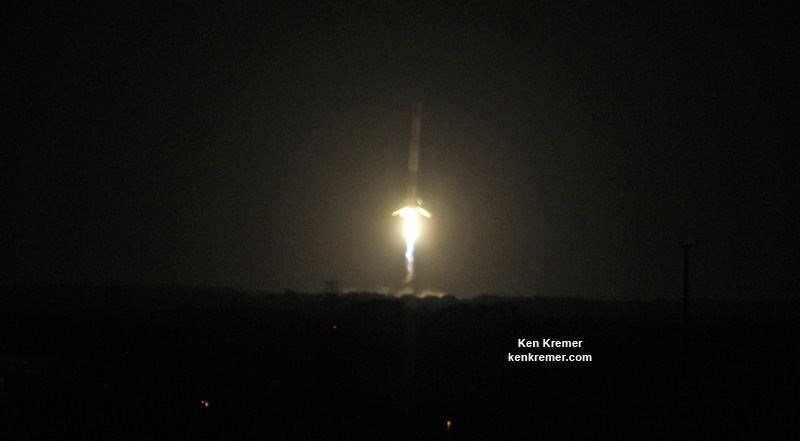
The first and second stages separated about two and a half minutes after liftoff and were easily visible to any eyewitness watching – backdropped by the sunshine states dark skies.
As the second stage soared to orbit, the first stage reignited a first stage engine for a series of burns targeting a return to the Cape.
We spotted the first engine firing about two mintues before landing, as it descended directly overhead of myself and everyone in the Cape Canaveral region.
For a few moments it looked like it was headed right towards us, but then steered away as planned with engines blazing to slow the boosters descent to make a gentle landing at LZ-1.
Finally the Falcon landed, obscured by a big vapor cloud and sonic booms roaring around the space coast – and waking many local residents. Several folks told me they were suddenly woken by the shocking booms reverberating inside their homes.
Some area residents even called 911 not knowing the true nature of the noises.
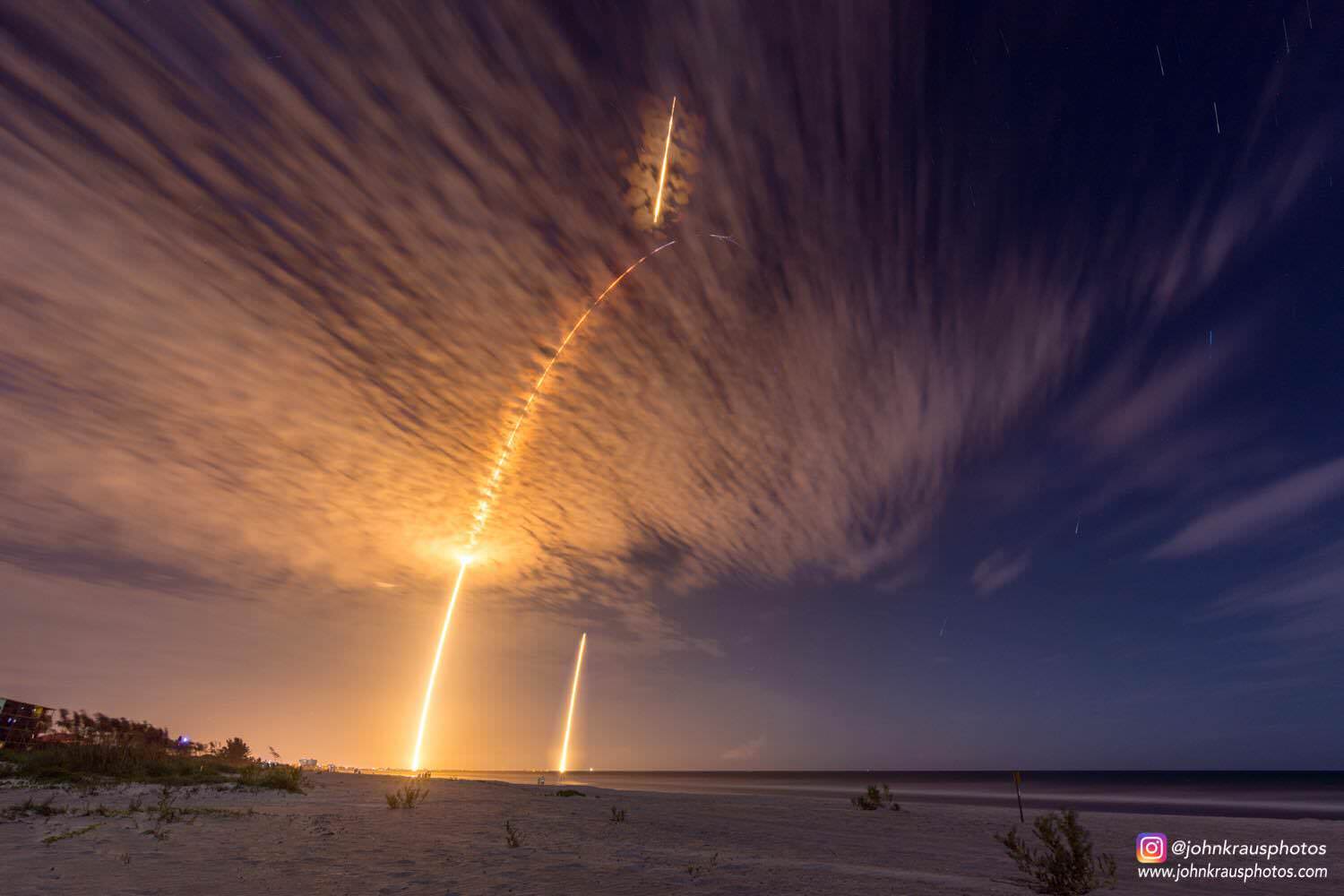
Among the wealth of over 3900 pounds (1790 kg) of research investigations loaded on board Dragon is an off the shelf instrument designed to perform the first-ever DNA sequencing in space, and the first international docking adapter (IDA) that is absolutely essential for docking of the SpaceX and Boeing built human spaceflight taxis that will ferry our astronauts to the International Space Station (ISS) in some 18 months.
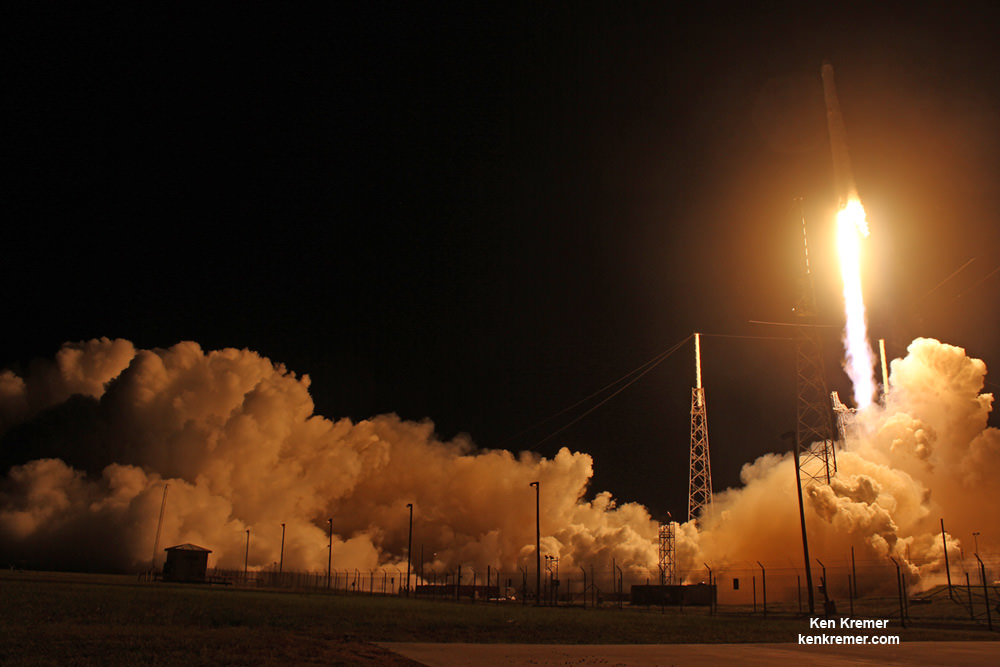
CRS-9 counts as the company’s ninth scheduled flight to deliver supplies, science experiments and technology demonstrations to the International Space Station (ISS).
The CRS-9 mission is for the crews of Expeditions 48 and 49 to support dozens of the approximately 250 science and research investigations in progress under NASA’s Commercial Resupply Services (CRS) contract.
Dragon reached its preliminary orbit about 10 minutes after launch. Then it deployed a pair of solar arrays and began a carefully choreographed series of thruster firings to reach the space station.
If all goes well, Dragon is scheduled to arrive at the orbiting outpost on Wednesday, July 20, after a 2 day orbital chase.
NASA astronaut Jeff Williams will then reach out with the station’s 57.7-foot-long Canadian-built robotic arm to grapple and capture the private Dragon cargo ship working from a robotics work station in the station’s cupola. NASA astronaut Kate Rubins will serve as Williams backup. She just arrived at the station last week on July 9 for a minimum 4 month stay, after launching to orbit on a Russian Soyuz on July 6 with two additional crew mates.
Ground commands will be sent from Houston to the station’s arm to install Dragon on the Earth-facing bottom side of the Harmony module for its stay at the space station. The crew expects to open the hatch a day later after pressurizing the vestibule in the forward bulkhead between the station and Dragon.
Live coverage of the rendezvous and capture July 20 will begin at 5:30 a.m. on NASA TV, with installation coverage set to begin at 9:45 a.m.
CRS-9 marks only the second time SpaceX has attempted a land landing of the 15 story tall first stage booster.
The history making first time successfully took place at Landing Zone 1 (LZ 1) on Dec. 22, 2015 as part of the ORBCOMM-2 mission. Landing Zone 1 is built on the former site of Space Launch Complex 13, a U.S. Air Force rocket and missile testing range.
SpaceX also successfully recovered first stages three times in a row at sea this year on an ocean going drone ship barge using the company’s OCISLY Autonomous Spaceport Drone Ship (ASDS) on April 8, May 6 and May 27.
Altogether SpaceX has successfully landed and recovered 5 first stage booster intact and upright.
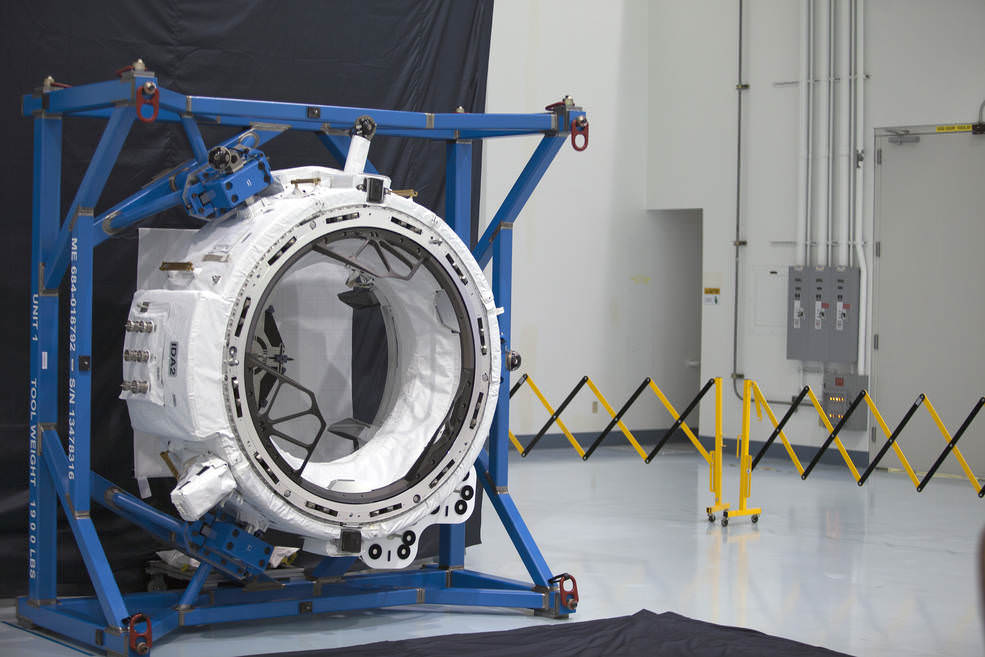
Watch for Ken’s onsite CRS-9 mission reports direct from the Kennedy Space Center and Cape Canaveral Air Force Station, Florida.
Here’s my launch pad video of the blastoff:
Video caption: SpaceX Falcon 9 lifts off with Dragon CRS-9 resupply ship bound for the International Space Station on July 18, 2016 at 12:45 a.m. EDT from Space Launch Complex 40 at Cape Canaveral Air Force Station, Fl, as seen in this up close video from Mobius remote camera positioned at the pad. Credit: Ken Kremer/kenkremer.com
Stay tuned here for Ken’s continuing Earth and Planetary science and human spaceflight news.
………….
Learn more about Juno at Jupiter, SpaceX CRS-9 rocket launch, ISS, ULA Atlas and Delta rockets, Orbital ATK Cygnus, Boeing, Space Taxis, Mars rovers, Orion, SLS, Antares, NASA missions and more at Ken’s upcoming outreach events:
July 18, 26-28: “SpaceX launches to ISS on CRS-9, Juno at Jupiter, ULA Delta 4 Heavy and Atlas V spy satellite launches, SLS, Orion, Commercial crew, Curiosity explores Mars, Pluto and more,” Kennedy Space Center Quality Inn, Titusville, FL, evenings
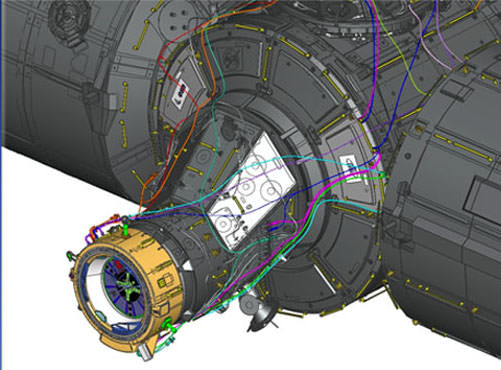
Credits: NASA
